Longer posts
Our favorites from the trip
To put the final bow on our 100 Day Adventure, we thought it’d be fun to reflect on our trip “favorites.”
Destination

It’s probably not surprising that our favorite destination on this trip was safari-related, as that was the part of the trip we were most excited for. This particular destination featured a day of both morning and sunset safaris, interrupted only by some time at our remote tented camp inside a national park. The two game drives were stellar—we spotted an incredible amount of wildlife, including our very first leopard, along with a bunch of other great interactions with a wide variety of “top tier” animals. I’m speaking of the Okavango Delta in Botswana, an UNESCO World Heritage Site.
Wildlife experience

While we thoroughly enjoyed our experience in Botswana, I think our single favorite experience was following a leopard in Sri Lanka. It was such a surprise when we saw it (the rest of the safari tour that day had been sort of a dud), and then we promptly lost it into the bush. But, we repositioned along a different roadway and were able to track for quite some time, losing it as it entered the dense forest, repositioning elsewhere with the hopes of it again emerging from the vegetation, and guessing correctly several times. Eventually we got a chance to watch it make a (surprisingly lackadaisical) hunting attempt on a spotted deer that just a handful of yards away from us. Seeing a leopard was our primary goal in Sri Lanka, so it was great that it came together like it did.
Country
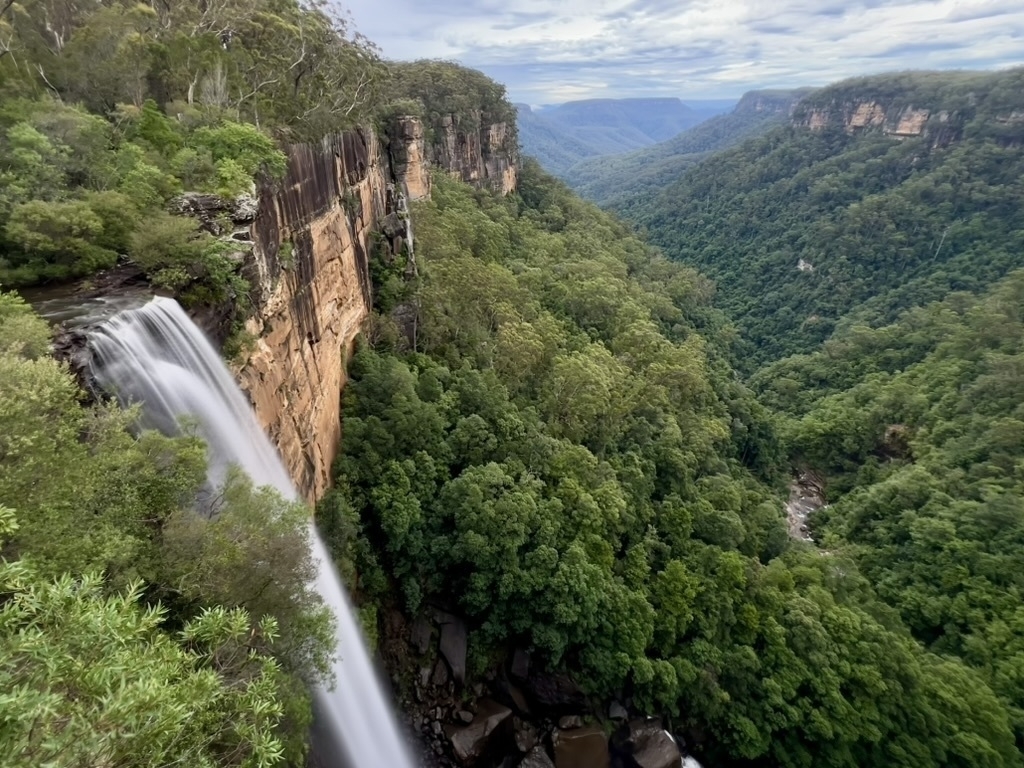 Overall, our favorite country on the trip was Australia. It was the only country on the trip that we could easily relocate to—just show up tomorrow and feel like we’re still at home. It also helped that we spent most of our time there campervanning around national parks…which, you know, is already probably our favorite thing to do. So as you can imagine, we’ve already started plotting a return trip, and a new quest to circumnavigate the continent, too.
Overall, our favorite country on the trip was Australia. It was the only country on the trip that we could easily relocate to—just show up tomorrow and feel like we’re still at home. It also helped that we spent most of our time there campervanning around national parks…which, you know, is already probably our favorite thing to do. So as you can imagine, we’ve already started plotting a return trip, and a new quest to circumnavigate the continent, too.
City

Our favorite city (yeah yeah, it’s also a country) was Singapore. Of course, it helps that you arrive in perhaps the most interesting airport in the world. That place is impressive. But overall, it was both a welcome reprieve for us, as well as a quite unique place. After arriving from Sri Lanka after more than a month in Africa—places where roadside trash is seemingly ubiquitous—Singapore felt nearly surgical-table clean. Beyond its cleanliness, it also featured some really interesting architecture. It felt modern, safe, and a bit futuristic.
Meal

On the second leg of our overlanding safari tour, our truck broke down for seven hours on the (effectively shadeless) side of a two-lane highway in Zambia. Not ideal. Eventually, we busted out the cooking equipment and our guide made some simple chicken fajitas. They were glorious. It might have just been the situation, but it was our favorite meal of the trip.
Accommodation

Our favorite accommodation during the trip was our tented camp in the Okavango Delta in Botswana. This was not the nicest place we stayed, by any measure, but it was among the more memorable. We had to leave our overlanding vehicle and take a 4 hour ride in a safari vehicle just to get there. The camp had very limited electricity, just a couple plugs in the “lobby” tent, which were grossly abused by visitors who concocted a Griswold-style daisychaining of extension cords and chargers that was surely a fire hazard. Luckily, we had prepared for this and used our generous battery capacity instead (it pays to come prepared). Our shower and toilet were outside and open to the air. Baboons bounced on our tent roof during our mid-day siesta. Meals happened in the large “lobby” tent, which was open on one side to a large grassy field where large mammals grazed, or you could sit around the campfire instead.
Brewery

Good craft beer was hard to find on this trip. That’s not too surprising—the places on our itinerary aren’t beer places; after all, you don’t go to rural East Africa for hazy IPAs. That said, we had expected a bit better beer in a few of the major cities we visited. Luckily, our time in the Blue Mountains in Australia helped redeem the beer portion of our trip. That’s because we found Mountain Culture Brewing, which was our trip favorite by a wide margin.
Some final photos from Australia
It was right back into the fire as soon as we returned to the US, so wrapping up the trip posts has taken a back seat. Sorry! Well, here are a few final posts from our last several days exploring the country. -S 🇦🇺
Wilson’s Promontory National Park


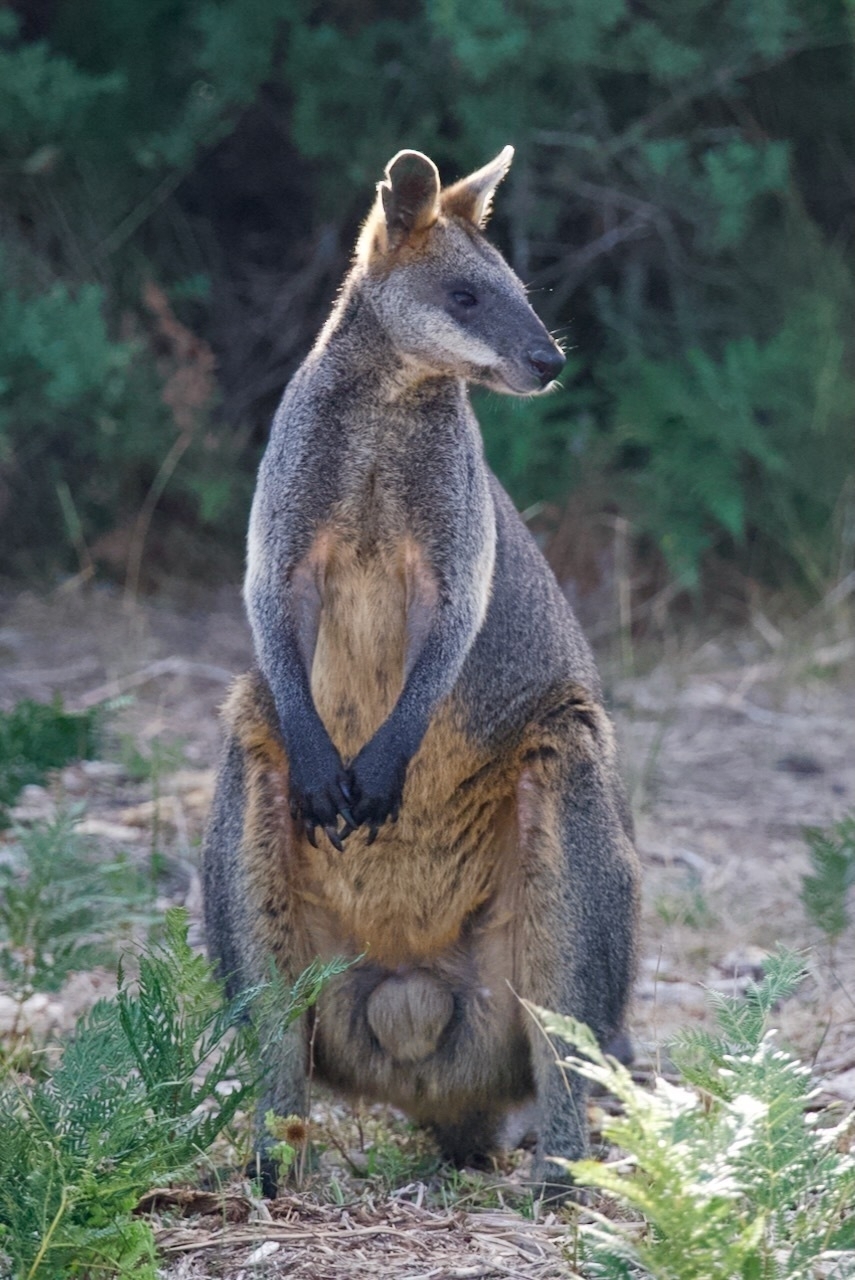

Along the way

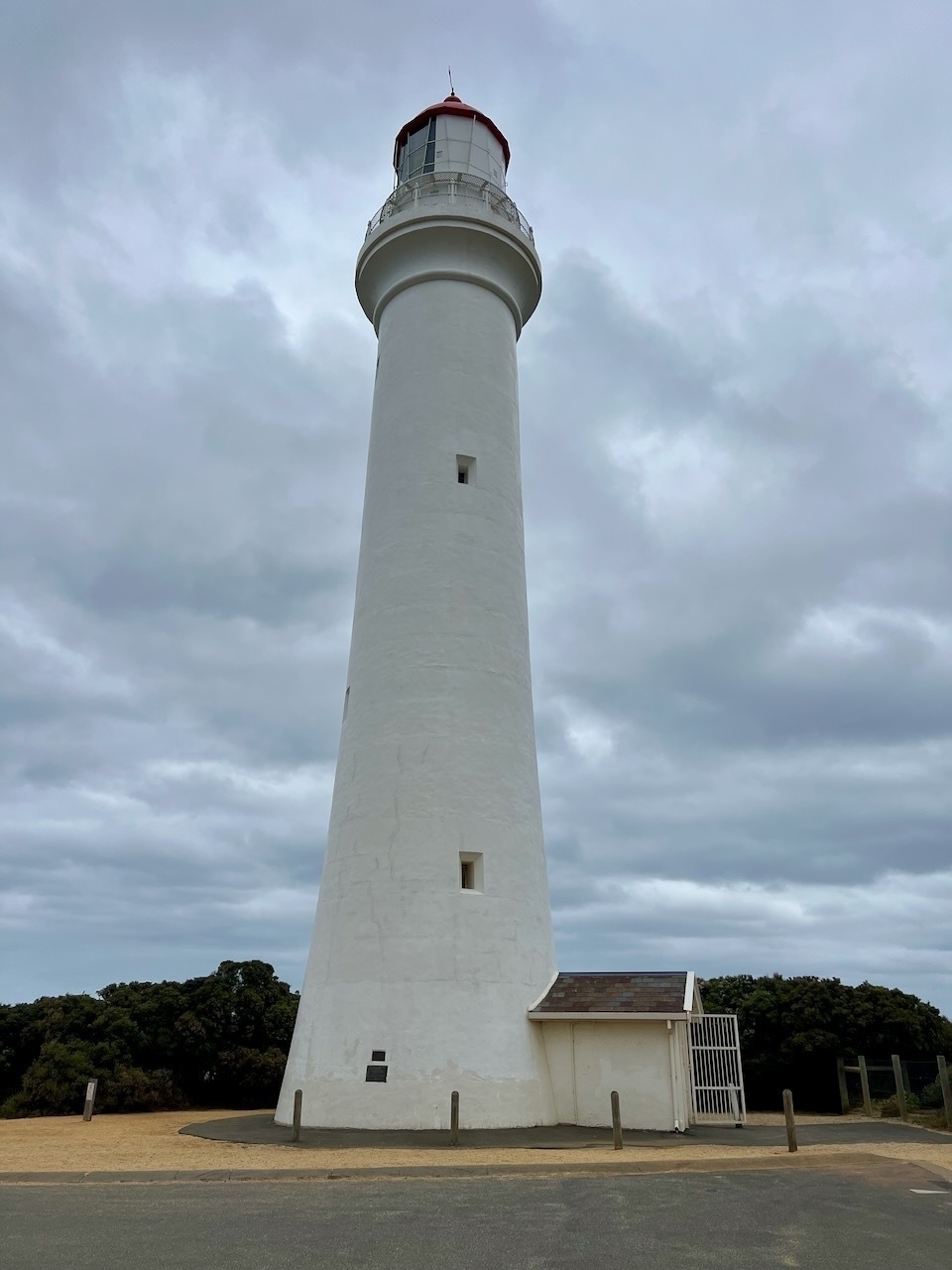



Grampians National Park




A wall in Melbourne the night before our return journey

Enchida browsing on Raymond Island
One of the highlights of our time on Raymond Island in Australia was enjoying an enchida browsing around for a late lunch (enchidas and platypuses are the only living mammals that lay eggs). We must have spent 30 minutes just watching this guy waddle around and sniff around in the dirt. -S 🇦🇺
The Sea Stacks of Australia’s Great Ocean Road
It’s been a bit since we posted the first part of our drive on the Great Ocean Road, but here’s the second half—the portion that includes the famed Twelve Apostles and other sea stacks.
While we enjoyed the stops we made along this stretch—though unfortunately, some of the spots we were most excited about were closed—it was also quite crowded. Very, very crowded. We also found it funny that there were lots of “Australia drives on the left side of the road” signs as reminders for all the tourists. -S 🇦🇺










Our campervan in Australia


We rented a Euro Mini campervan from Apollo, picking up in Sydney and dropping off in Melbourne. We wanted something small and generally parkable, but also fully self-contained, a requirement to boondock in Australia.
Overall, the vehicle worked fine for us. After two months of hot weather, we loved having the AC at night. Because it only works when on shore power, we sought out powered sites for all but one night of the trip. The bed length was a bit cramped, and the process of tucking in the sheet was frustrating. However, we enjoyed having a large dinette table, and the rest of the vehicle was fine. We never made use of the shower or toilet or even the sink or stove. I guess we’re just too used to not having those things that we easily make due without them.


While the vehicle came with most everything you’d need (including some actual appliances for when you were plugged in, like a microwave, toaster, blender, and hairdryer), we quickly added a few additional items: a better pillow, some doormats, sponges, insulated cups, as well as other camping supplies like paper towels and trash bags, in addition to food and drinks.
Overall, the campervan was one of the highlights of the trip, if only because it offered the freedom to explore that we’re used to and hadn’t enjoyed for most of the trip.
For those that requested one, here’s a quick video walk-through of the van:
We enjoyed our campervanning time so much that we adopted a quest to circumnavigate the continent in one—in sections, of course.
Our last night in the campervan
It’s our last night in the campervan, and it sorta feels like the last night of the trip, too. But we still have two nights in Melbourne, followed by a full week in French Polynesia.
We spent an hour or two sitting outside, gazing up at the incredible starscape late last night in Grampians National Park, talking a bit about the trip so far.
One of the questions we asked each other was, at this late stage of our epic trip, how much longer could we go in the campervan? Jen said another two weeks, depending on pace, while I said a solid month.
This portion of the trip has been the most comfortable, in part because Australia is quite like America. But also because this kind of travel—roadtripping the national parks—is our jam. We’re just doing it while driving on the other side of the road, seeing unusual wildlife, and sleeping in a campervan and not our Subaru or a tent.
We’ve thought a lot about acquiring such a vehicle for domestic travel over the last several years, but never came to a solid conclusion on if it would be worth the cost over simply tent camping and/or hoteling it. In most of our scenarios, it probably wasn’t. Still, there’s something very appealing about campervan travel, and I think the ease and relative luxury(?) of it would assist us in getting out of town more often.
But with job uncertainty looming, especially around schedule flexibility, we think it’s probably best to see how the year plays out. But that doesn’t mean we won’t constantly discuss, strategize, fantasize, research, and consider in the meanwhile. -S 🇦🇺

The Great Ocean Road
We started our first of two days driving the scenic Great Ocean Road, often regarded as one of the world’s best coastal highways, and one of the most remarkable war memorials, too.
A largely community-driven project, it served numerous purposes: a memorial to the fallen (Australia experienced the highest casualty rate of any nation in the Great War), an employment project for returning soldiers who needed work, and a way to connect isolated coastal communities and opening up the coast for tourism and development. And of course, it’s also quite scenic, offering some great coastal views (similar to the Pacific Coast Highway in the US) and plenty of beach access too. I bet this place is really hopping on good weather days—the water is much bluer than you’d expect.
Unfortunately, we caught much of it on a rainy day, and had no plans to swim anyway. So much of our visit was simply driving through, pulling off at numerous pull-offs and viewpoints, and generally enjoying the scenery.







Kennett River Nature Walk
Along the drive, there’s a popular short nature walk, bounded by local backyards on one side and a small river on the other, where you can often spot wild koalas. We had an incredible koala experience yesterday at Raymond Island (more photos of that soon), but we wanted to check out this little trail as well. While there were fewer koalas to be seen today, we still managed to find some.



I also really enjoy these laughing kookaburras, so between koala-spotting in the trees, I had my eyes out for sightings of these guys, too.
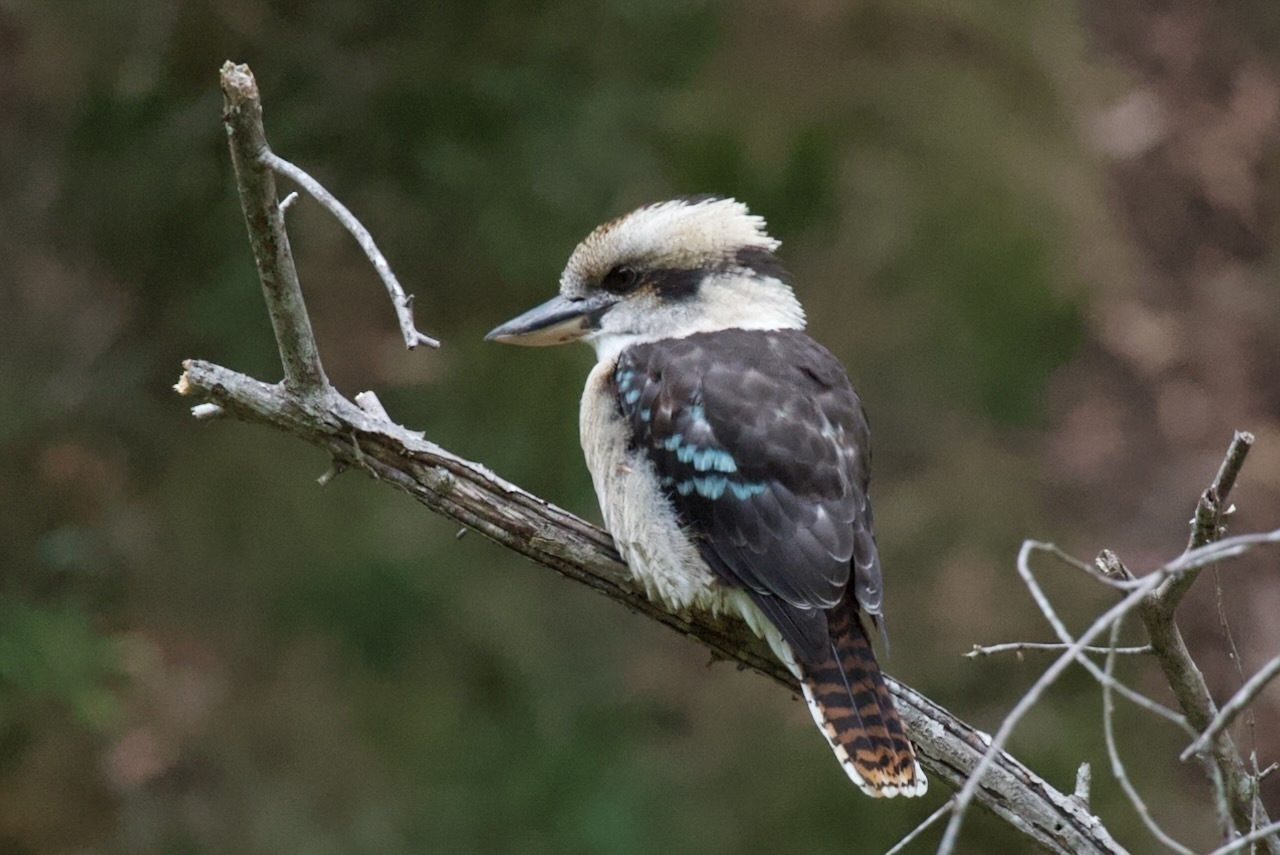


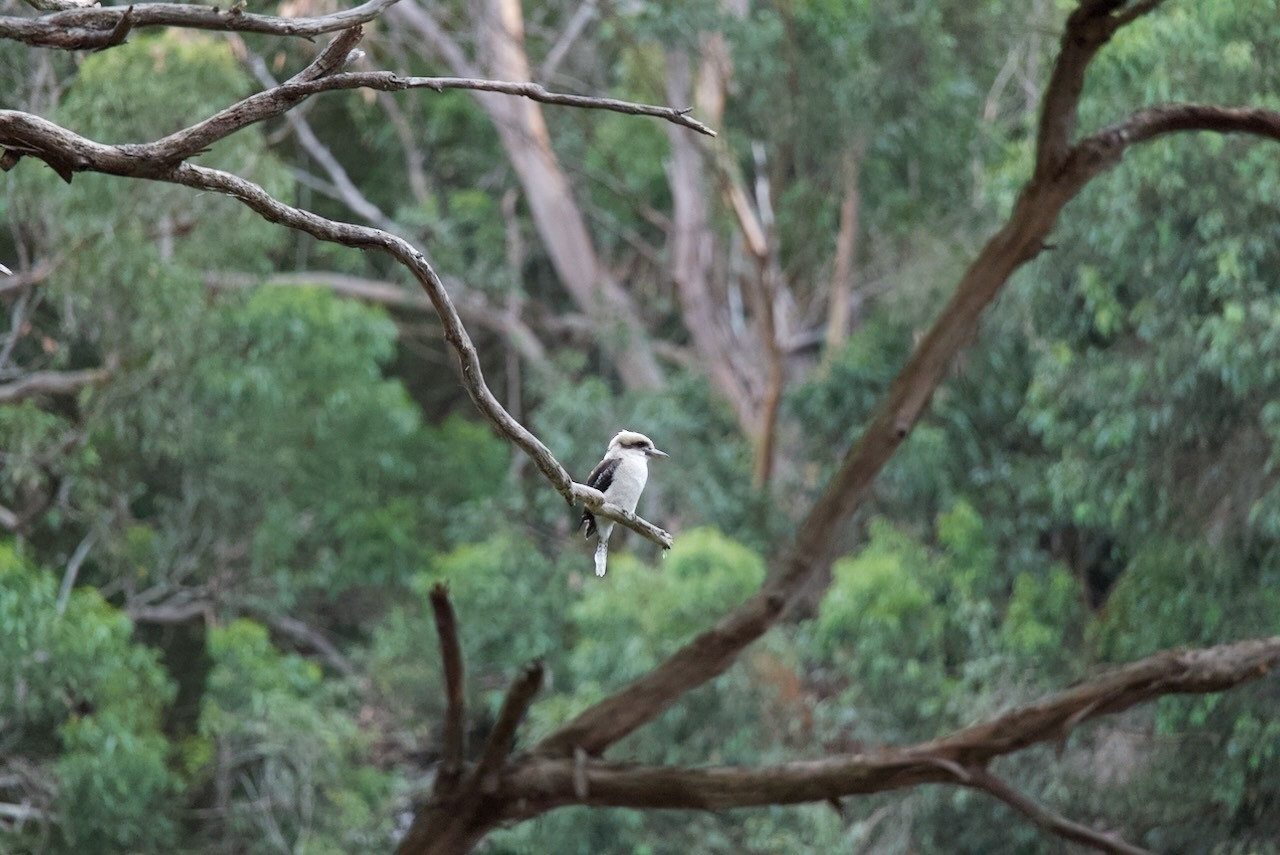
These cormorants near the start of the trail looked quite grumpy.

We also managed to have lunch at a brewery, and dinner at a brewhouse. Go figure, huh?

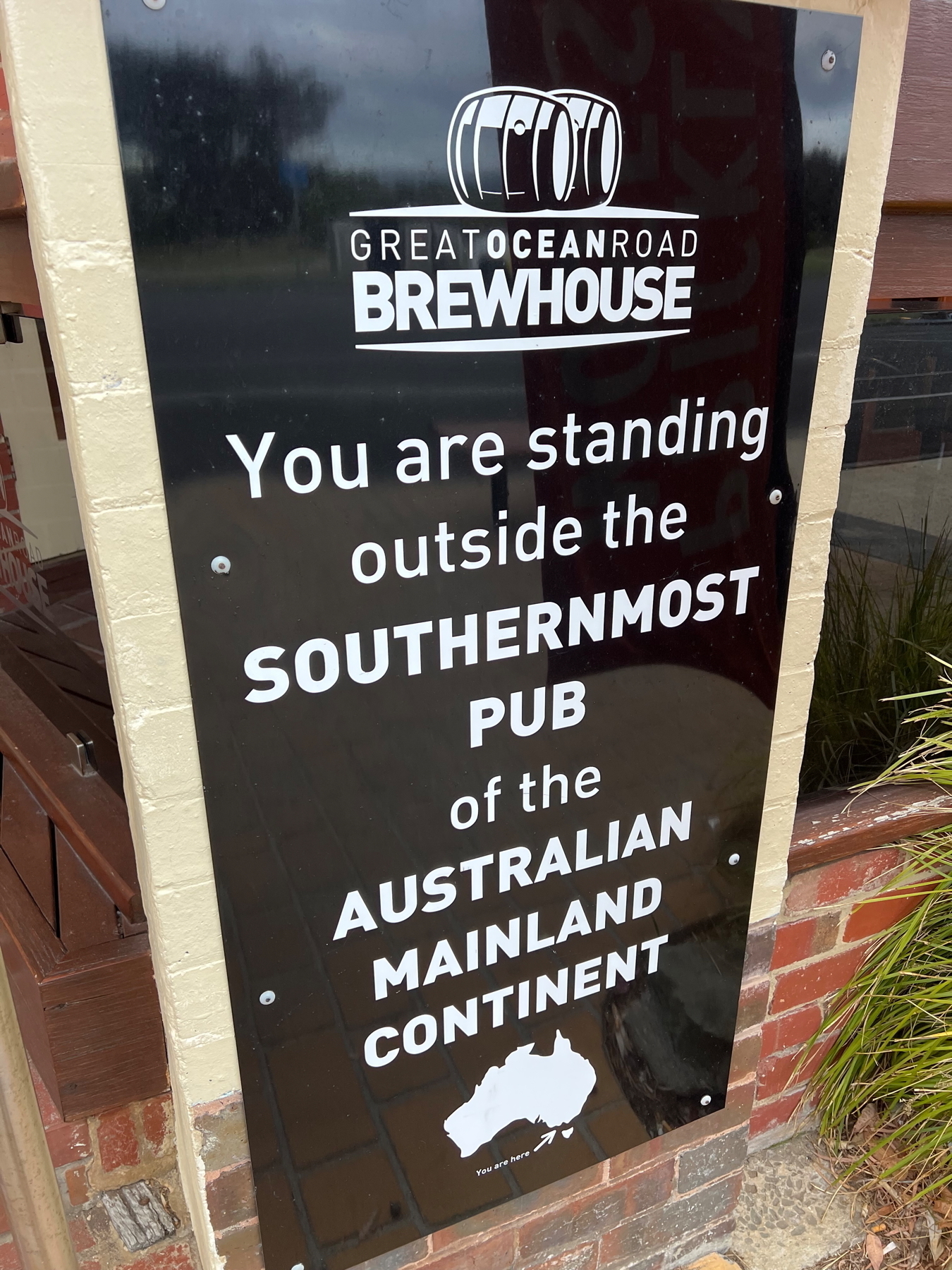
We have a number of additional stops planned for tomorrow, and hope to get as far as South Australia before we begin heading back towards Melbourne, where we return our campervan and fly to Tahiti. -S 🇦🇺
Parliament House, Canberra
Australia’s Parliament House is located in Canberra, Australian Capital Territory. The unique building, opened in 1988, has two large curved walls, separating the building into four quadrants with grass covering parts of the roof. Interestingly, instead of towering above the ground like most capital buildings, this one seems to emerge from the ground…its intended design. -J 🇦🇺
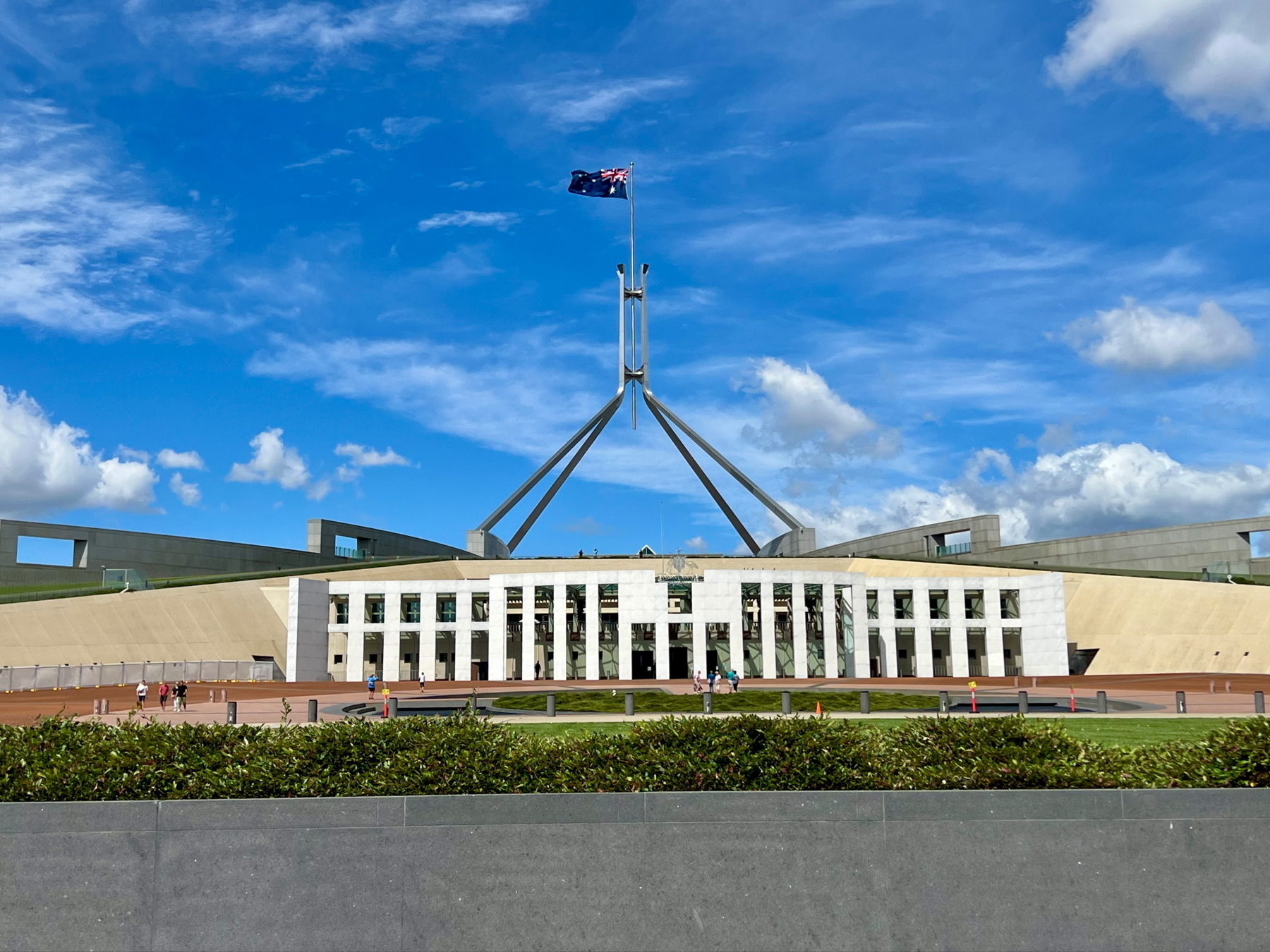


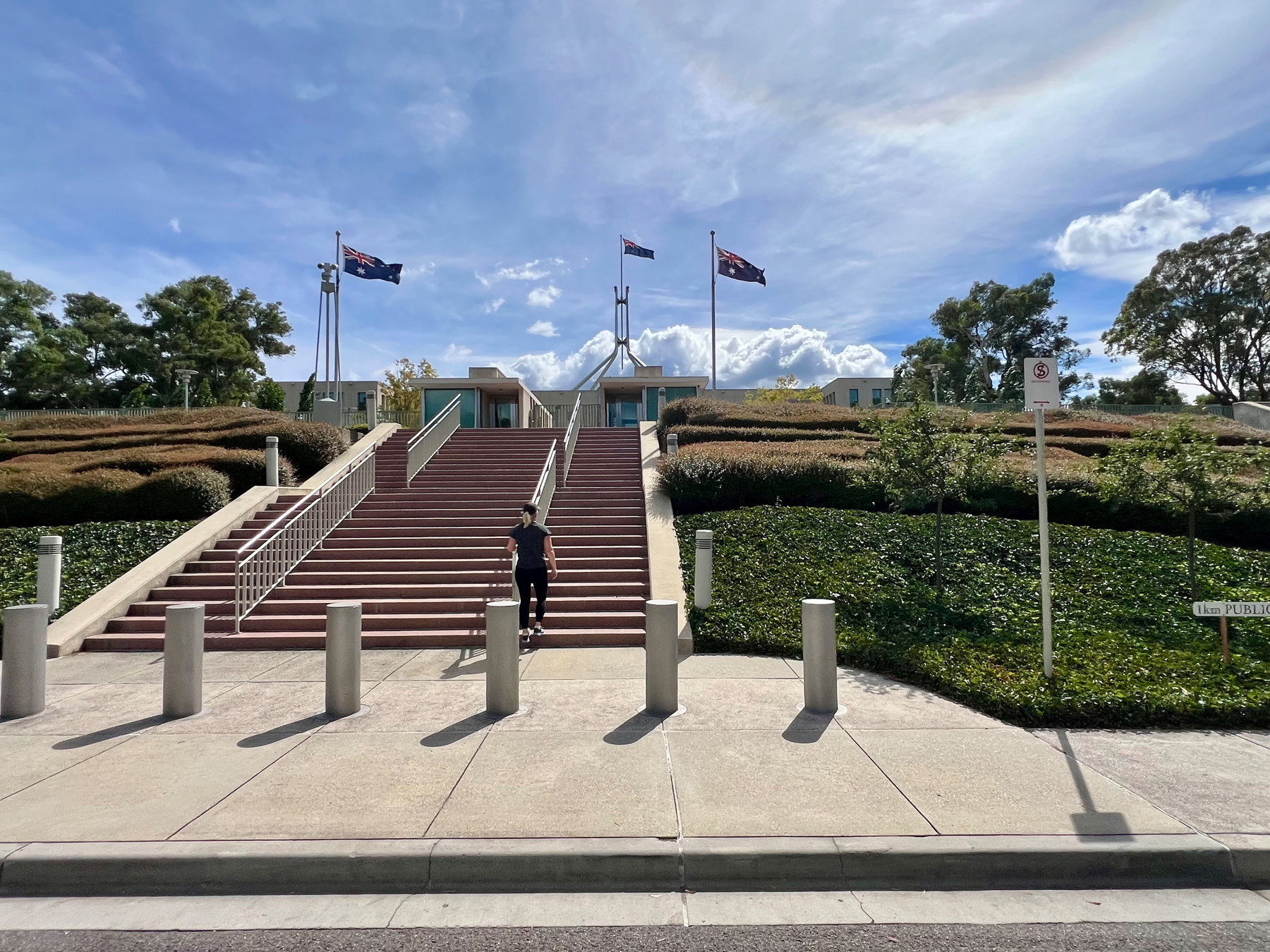
Carrington and Fitzroy Falls
Making our way inland towards Canberra, we stopped at two sets of short walks to magnificent falls. -S 🇦🇺
Carrington Falls, Budderoo National Park




Fitzroy Falls, Morton National Park


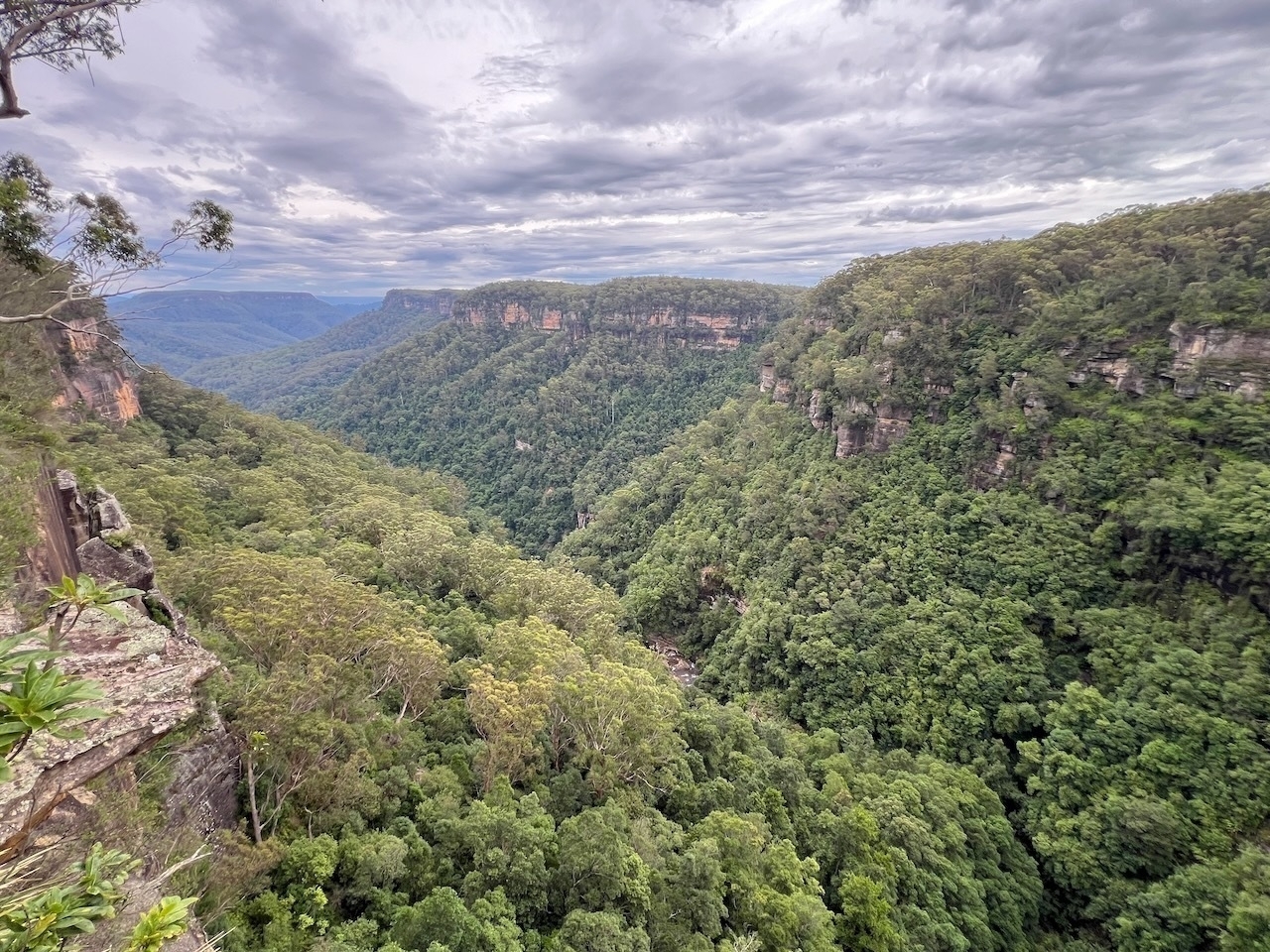

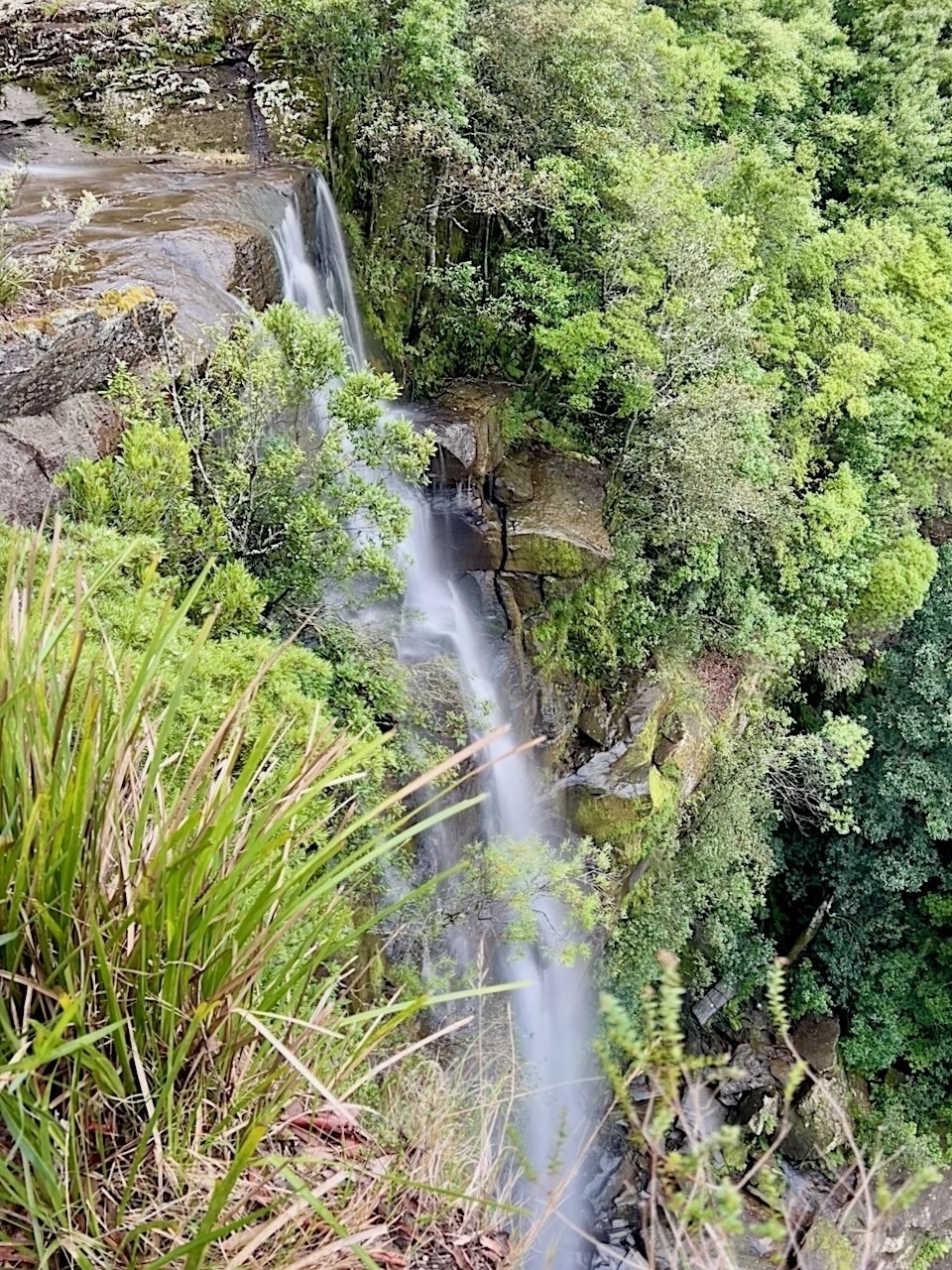

Royal National Park and Grand Pacific Drive
After returning to the Blue Mountains for the morning, we finally made our way back towards Sydney for the “start” of our drive towards Melbourne, where we’re returning the campervan in a little over a week.
Royal National Park
Our first stop was Royal National Park, just south of Sydney. There wasn’t specific we wanted to see or do there, except to pay homage to its very existence. You see, its claim to fame is being the second national park in the world, just a few years behind the incomparable Yellowstone. In fact, it was simply called The National Park for the first 75 years of its history, maintaining its “the” status even while numerous other national parks were established throughout Australia. Finally in 1955, to commemorate an official visit from Queen Elizabeth II in 1955—the first British monarch to visit Australia—the name was changed to Royal. I’m sure it helped reduce confusion, too.
Given our schedule, we only spent a couple hours in the park, first stopping at the visitor center, which is primarily a small cafe and gift shop, and hanging out at the nearby river.
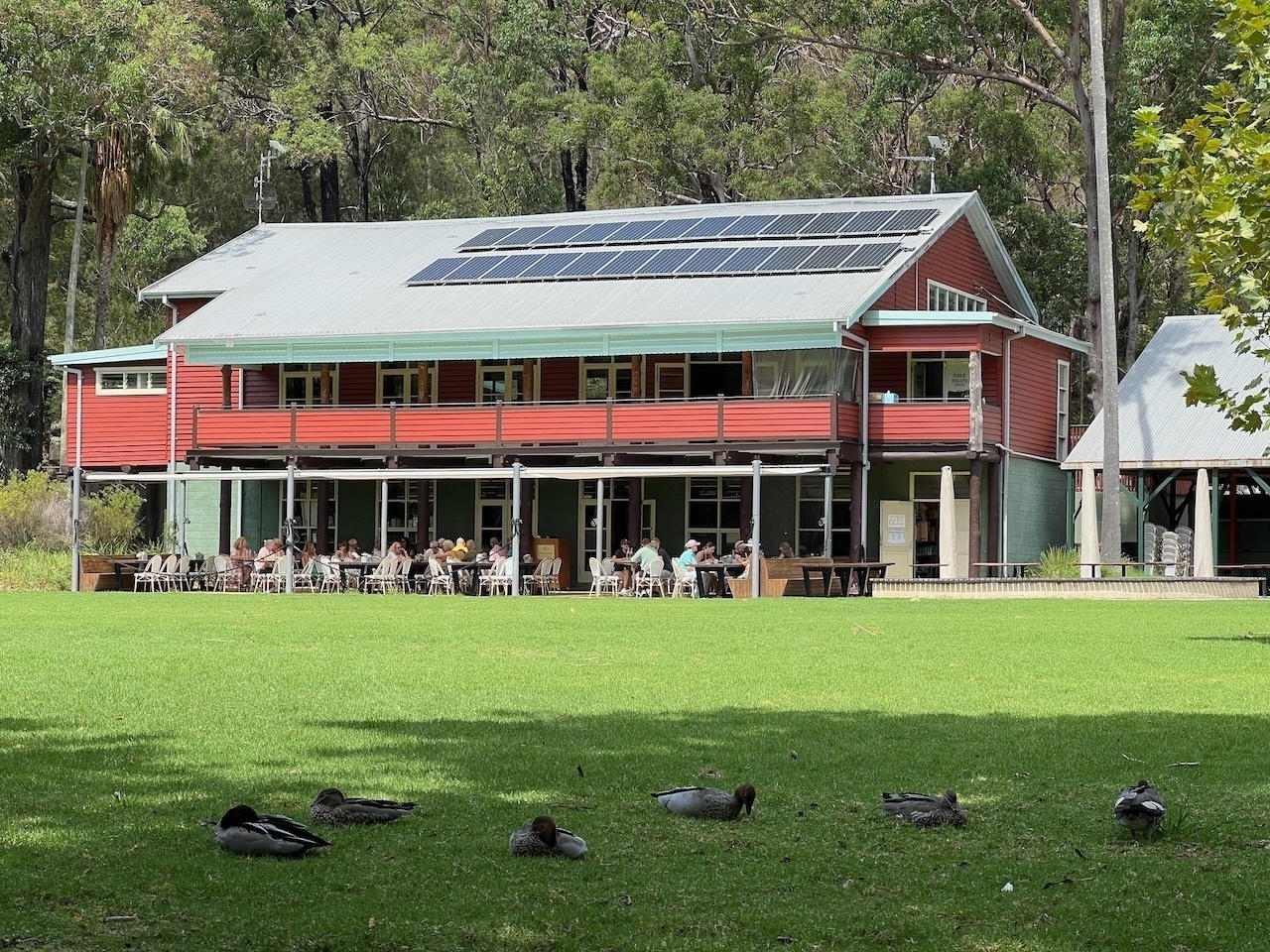

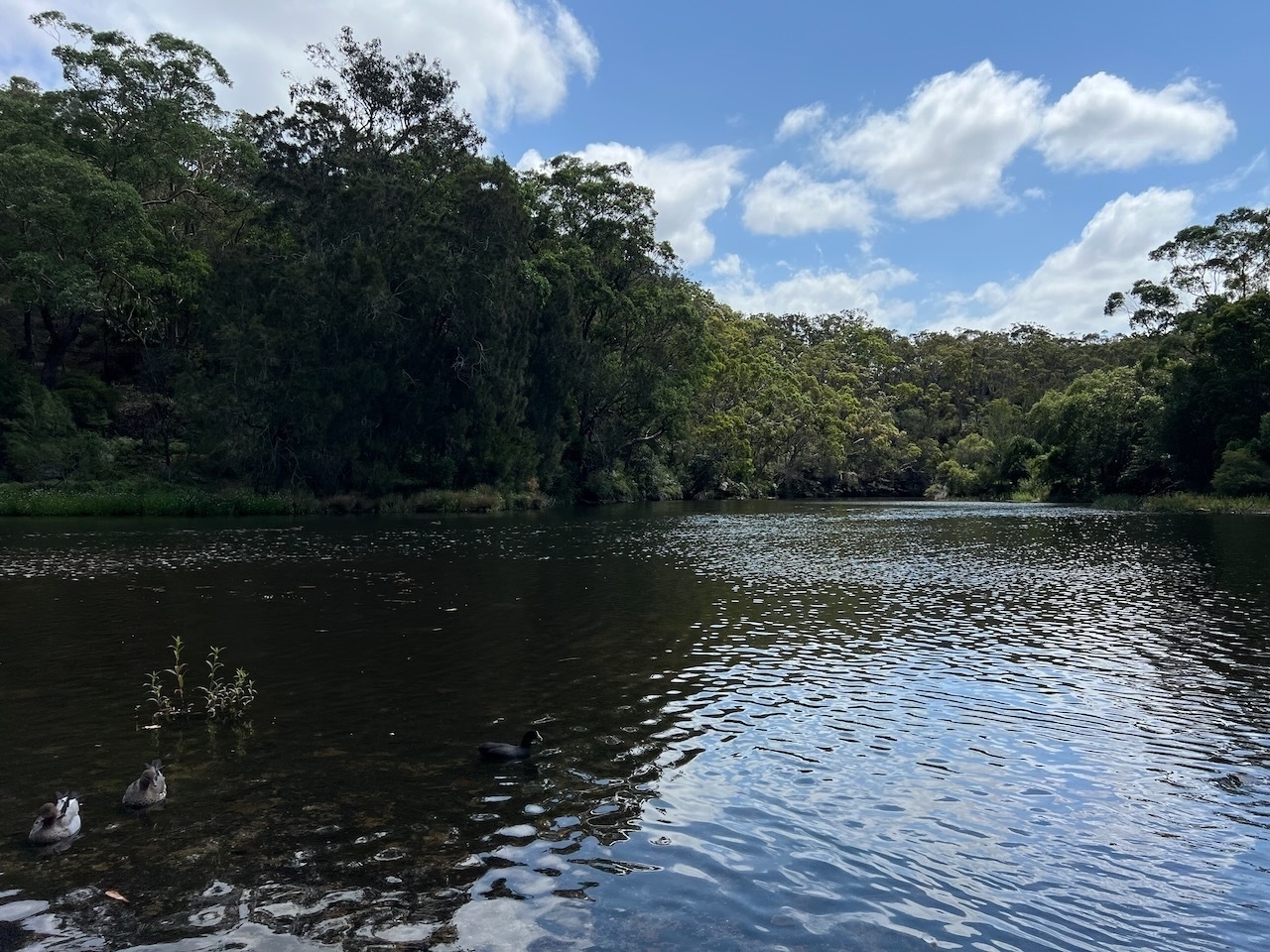
We then made it over to the famed Mattawolla area, checking out the small waterfall (guarded by a tall fence to prevent cliff jumpers, though we watched numerous people do it anyway) and the local swimming beaches.



While the park is now a UNESCO-listed Biosphere Reserve, it was primarily designated as a recreational park for Sydney residents, and you can certainly get that vibe during a visit. It’s too bad we didn’t have time for a hike there.
Grand Pacific Drive
After departing Royal National Park, it was time for some coastal driving along the Grand Pacific Drive, which begins near the park’s southern boundary. The highlight of the scenic drive is the Sea Cliff Bridge, a curving affair that jets out over the rugged coastline. This bridge apparently elicits exceptional pride from Australians. It was fun to see, but we didn’t loiter around too much; it was already late in the day at this point.



We did manage to pair dinner with a brewery stop, at Five Barrel in nearby Wollongong, before heading off for our campsite. -S 🇦🇺

Rock pools
In places where swimming might be a bit dangerous, many communities in Australia have built rock pools. These are public swimming pools built into shoreline rock adjacent to the ocean (and often naturally refilled with seawater during high tide) that offer residents a safer—and quite scenic—swimming experience. -S 🇦🇺



Blue Mountains National Park
The Blue Mountains west of Sydney are renowned, and they didn’t disappoint! Here are some shots from our time there. -S 🇦🇺
A quintessential view of the Blues—a waterfall cascades off a rocky escapement towards the thick forest below, punctuating what is an expansive vista.

A rare selfie

Scroll down to see what this waterfall looked like about 30 seconds later…

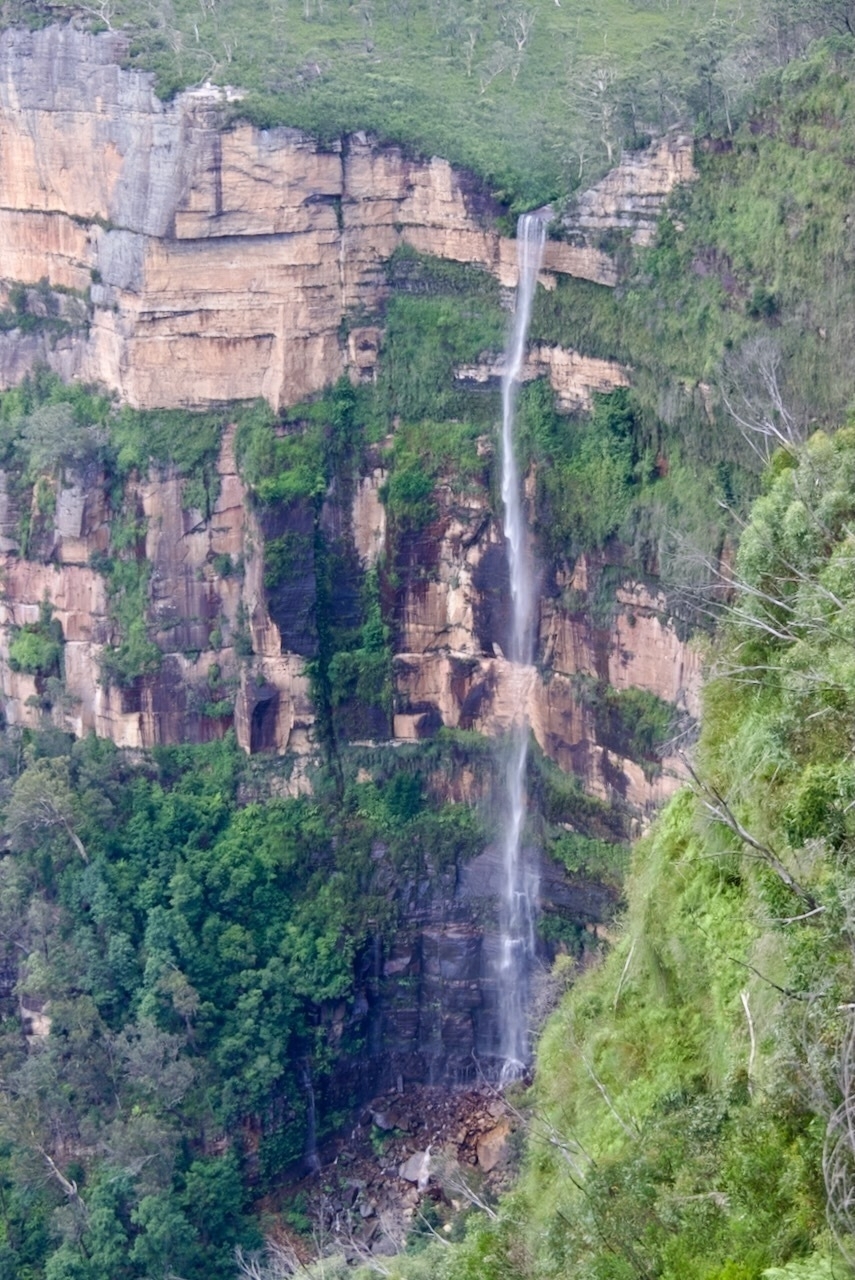


I’m not sure what it was about these trail blocks, but I really enjoyed taking photos of them.
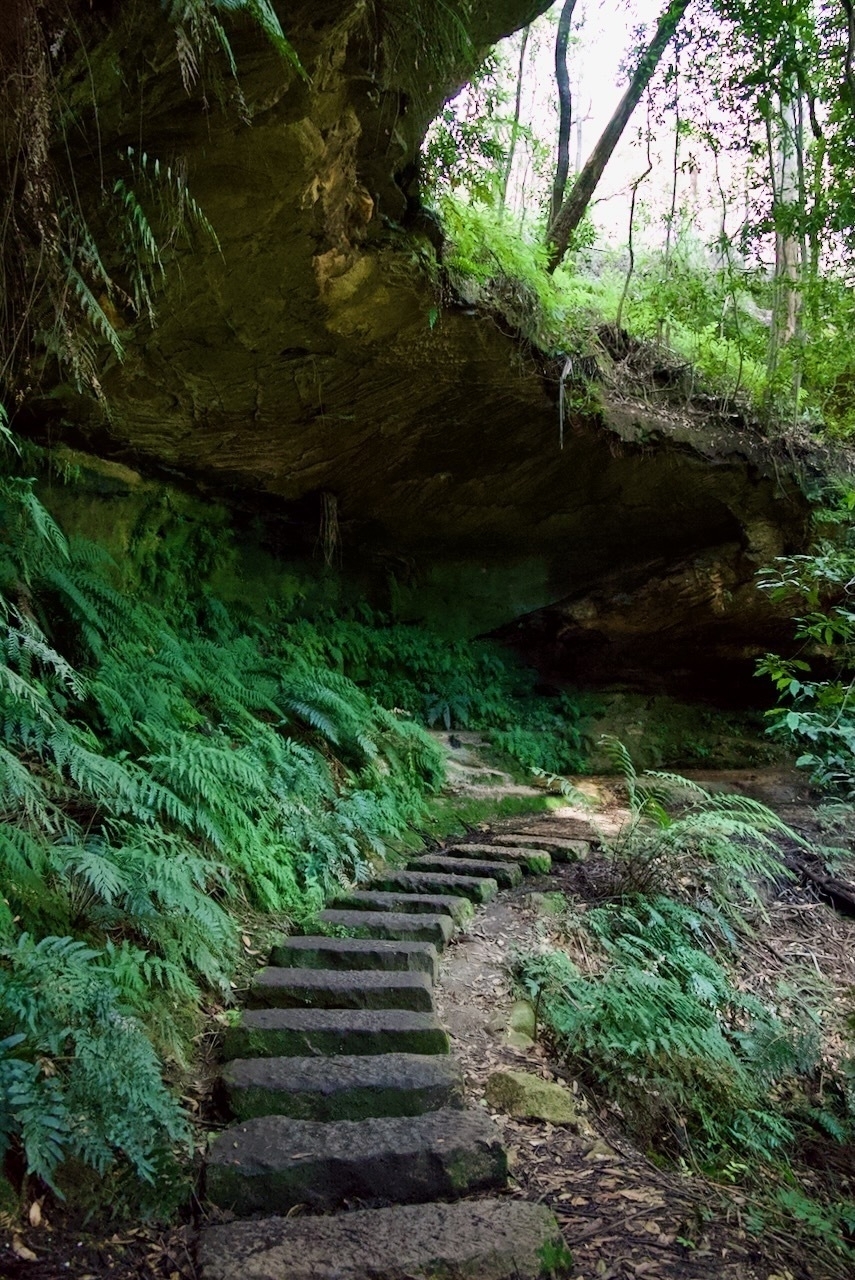
They always added a bit of visual interest in each stretch of trail they were in.

Unfortunately, sometimes these steps lead up and up and up and up.


Three Sisters




And here’s that earlier waterfall moments later. Unfortunately, I didn’t get a chance to really line up a quality shot before it was fully engulfed by the clouds.






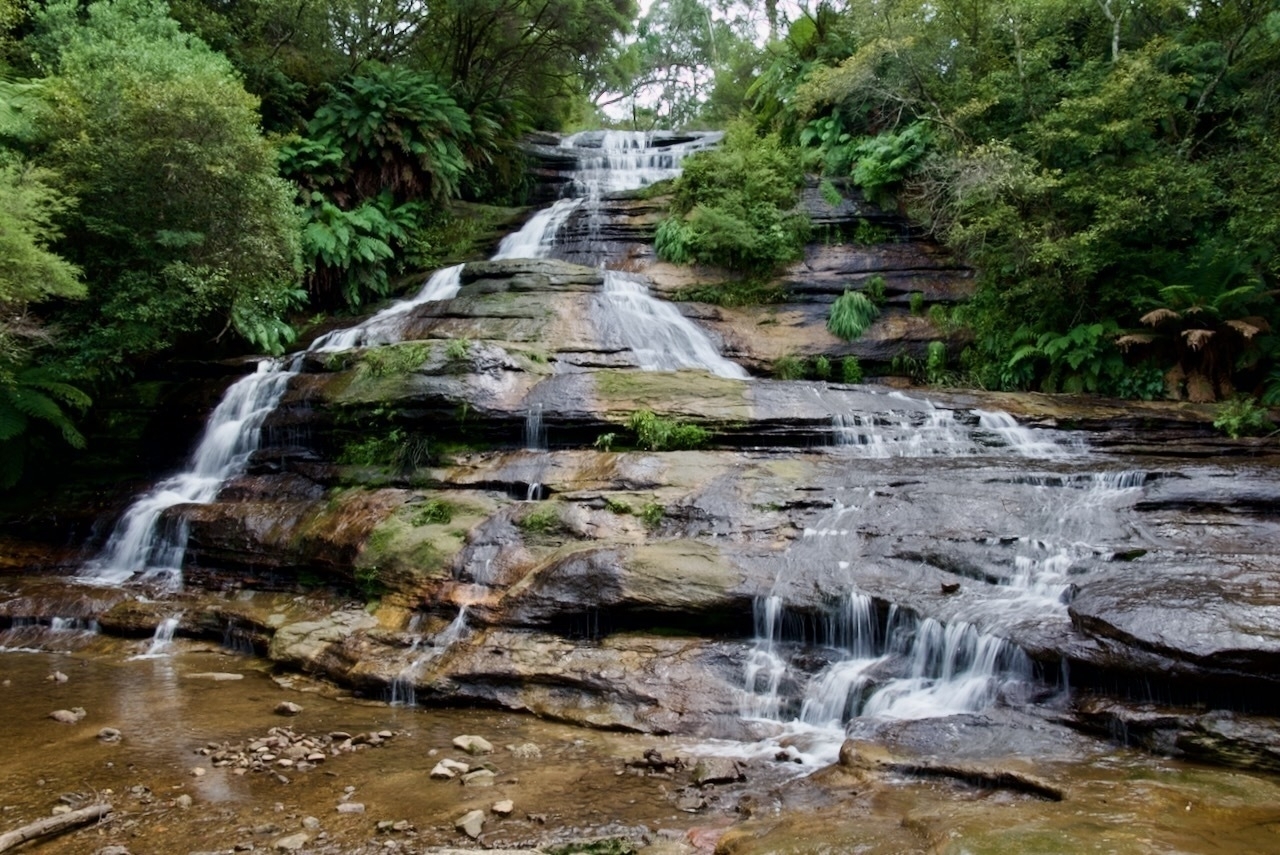

While the dense carpeting of tall trees dominates the valley floors, this stand of eucalyptus caught our eyes (or maybe we were just craving some broccoli).

Other Sydney Sites
Here are some other sites around Sydney we happened upon while we wandered. -J 🇦🇺
First and foremost, the Sydney Opera House and Sydney Harbour Bridge. (Don’t worry, there are more photos of the Opera House below!)


We ran across this ornate iron canopy that only said “Keep The Pavement Dry.” Apparently this is an old drinking fountain with an admonition against “sloppy drinking.” It was 1 of 8 installed in Sydney during the mid-1800s.

In this same park was an obelisk placed at the site from which all public roads into the interior of Australia were measured from.


An interesting fountain, unusual buildings, and a night scene.




The Museum of Sydney, built over the foundation of the First Government House and the location of the home of New South Wales’s first governor, Arthur Phillip. To map Sydney in 1831, 8 boundary stones were laid marking the edges of the city, the 7th of which is now housed in this Museum.

Sydney’s oldest Pub (Fortune of War) (1828).

And Sydney’s oldest pub brewery and oldest continuously operated hotel (Lord Nelson Brewery Hotel) (1841).

And, as promised, more from the Opera House. We found it interesting that each of the sail-shaped shells seems to be separated from the others and it is not just one continuous hall.
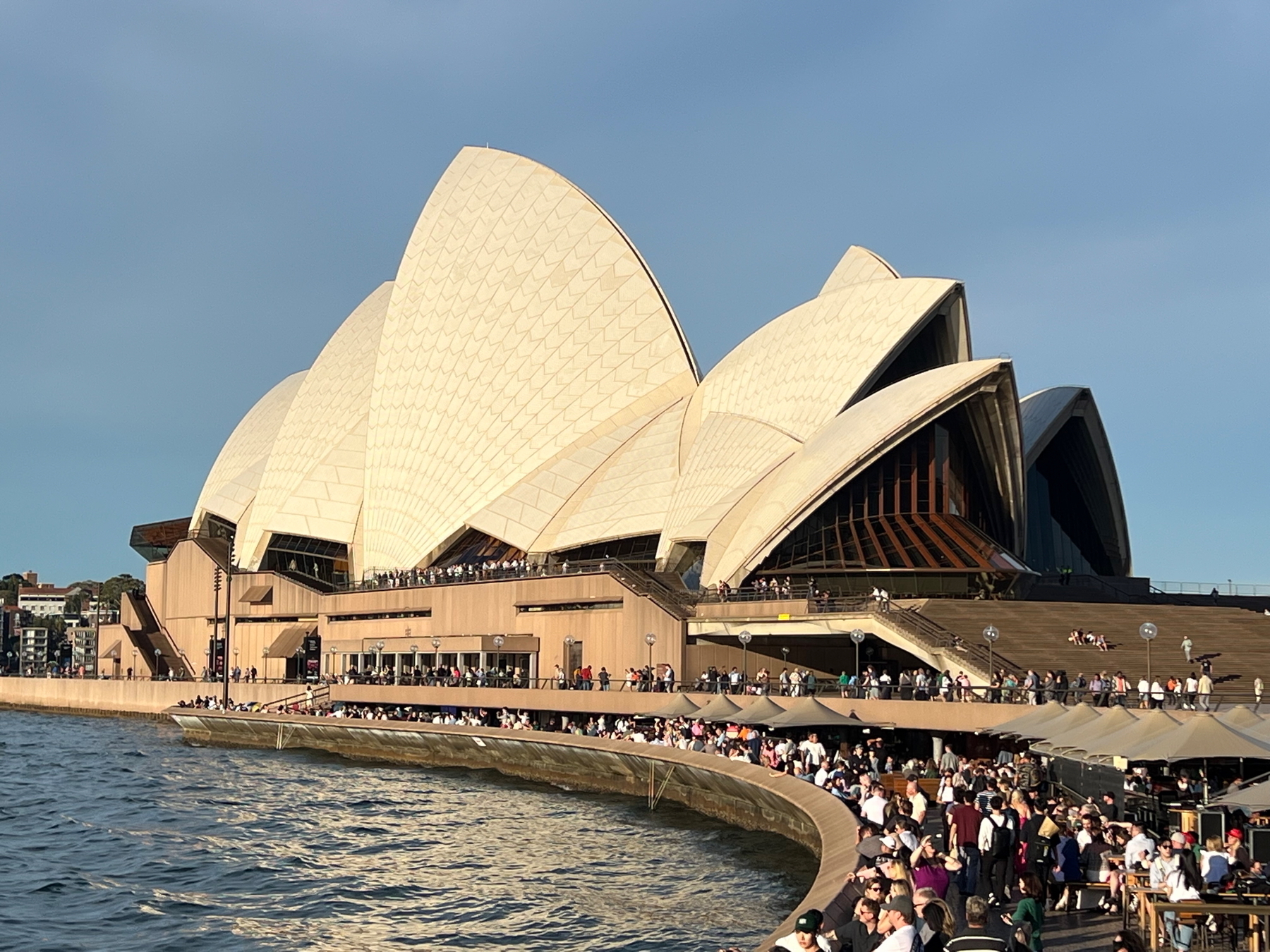



Hyde Park Barracks in Sydney
The full day we had in Sydney was rainy, so we visited a few museums. One was the Hyde Park Barracks (a UNESCO World Heritage Site), which was an interesting overview on Australia as a convict colony. In the 18th and 19th centuries, Britain transported many of its convicts to Australia and they became the labor force that eventually built modern Sydney and Australia.
The Barracks opened in 1819 as a dormitory to house male convicts, especially those who had just arrived. The Barracks remain intact today and visitors can see the original walls and ceiling/roof originally built by the convicts. In 1848, it was changed to a female immigration depot and then later served as an asylum for poor, sick, and homeless women. -J 🇦🇺




Snorkeling the Great Barrier Reef
Despite the terrible weather we had the entire time we were in Airlie Beach and the Whitsunday Islands, we did make it out to the Great Barrier Reef for a snorkel. (So yes, Scott finally used his snorkeling mask he has hauled all over the world!)
Although the weather made for cloudy and dark water, we still saw many amazing fish and different corals. Looking forward to coming back to the Whitsundays to see the beautiful beaches and seeing more amazing marine life. -J🇦🇺












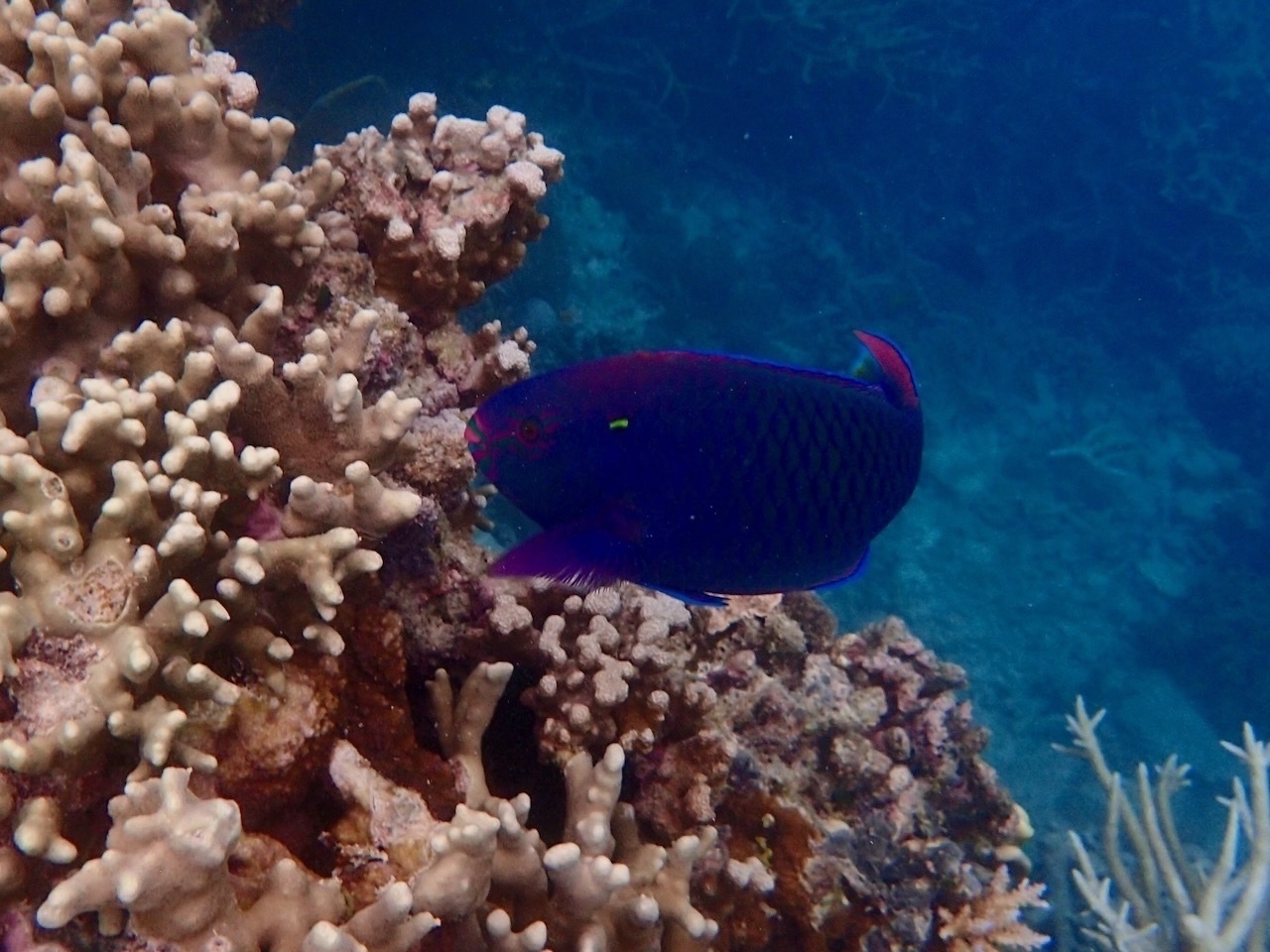







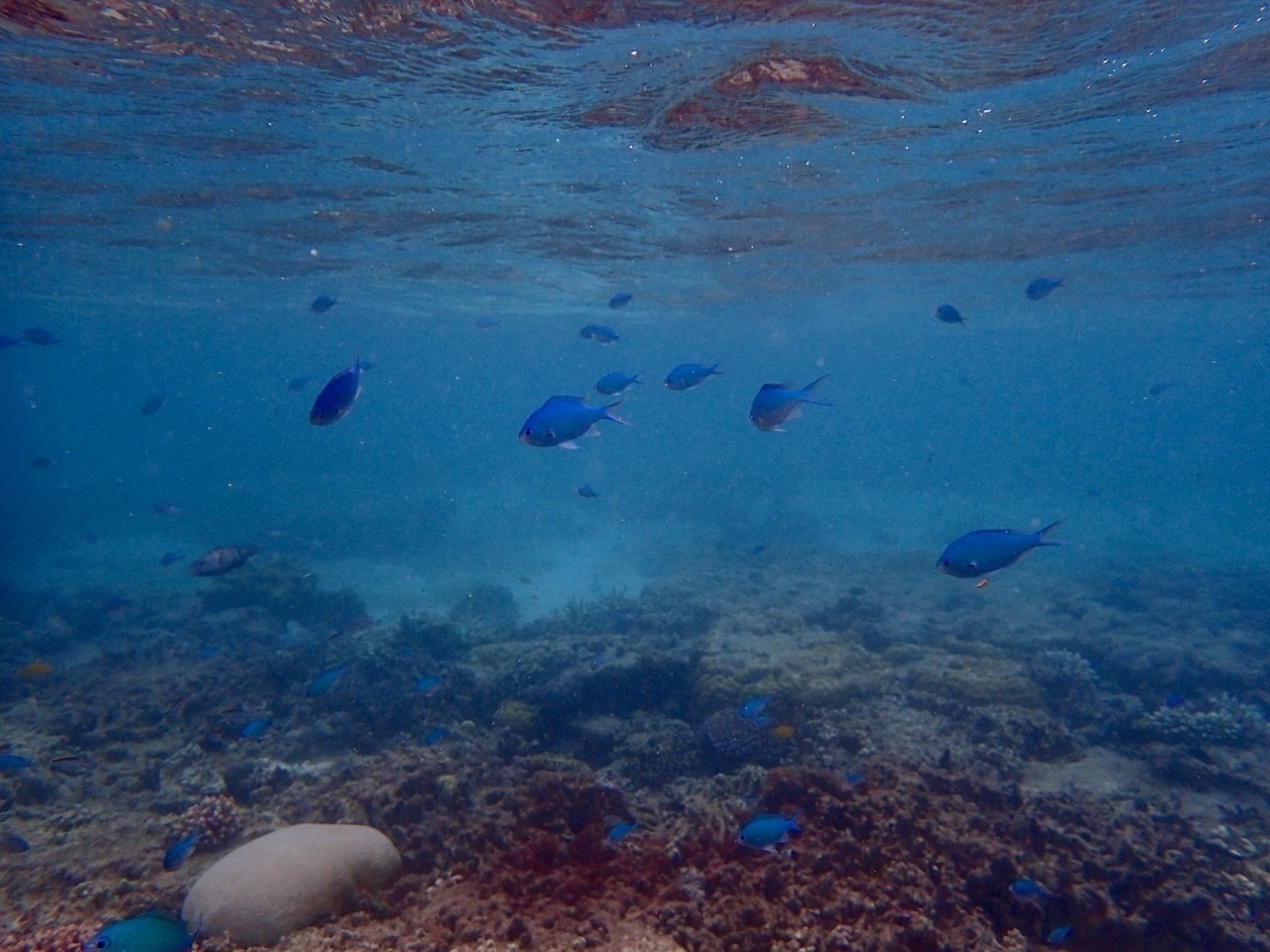



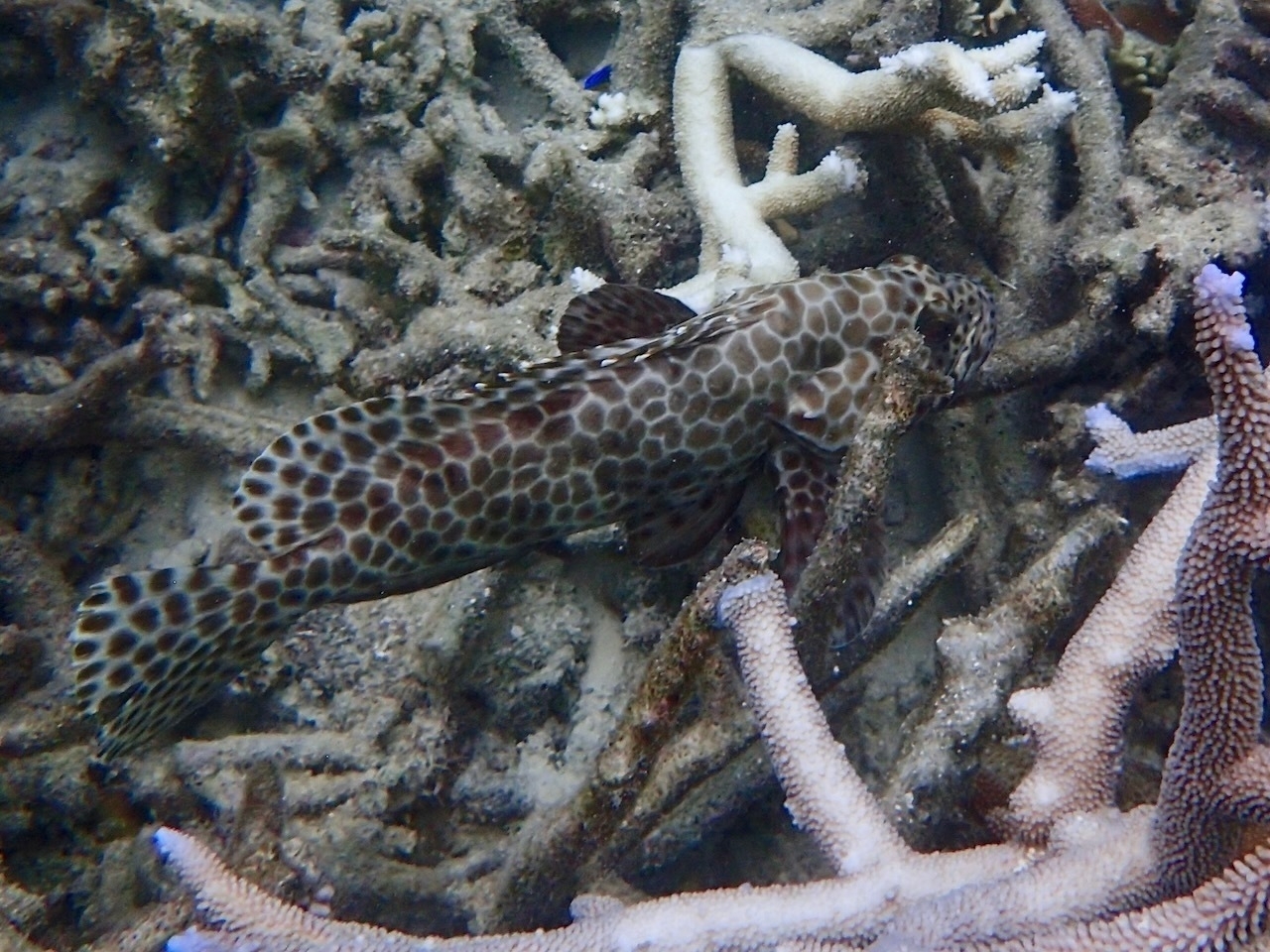


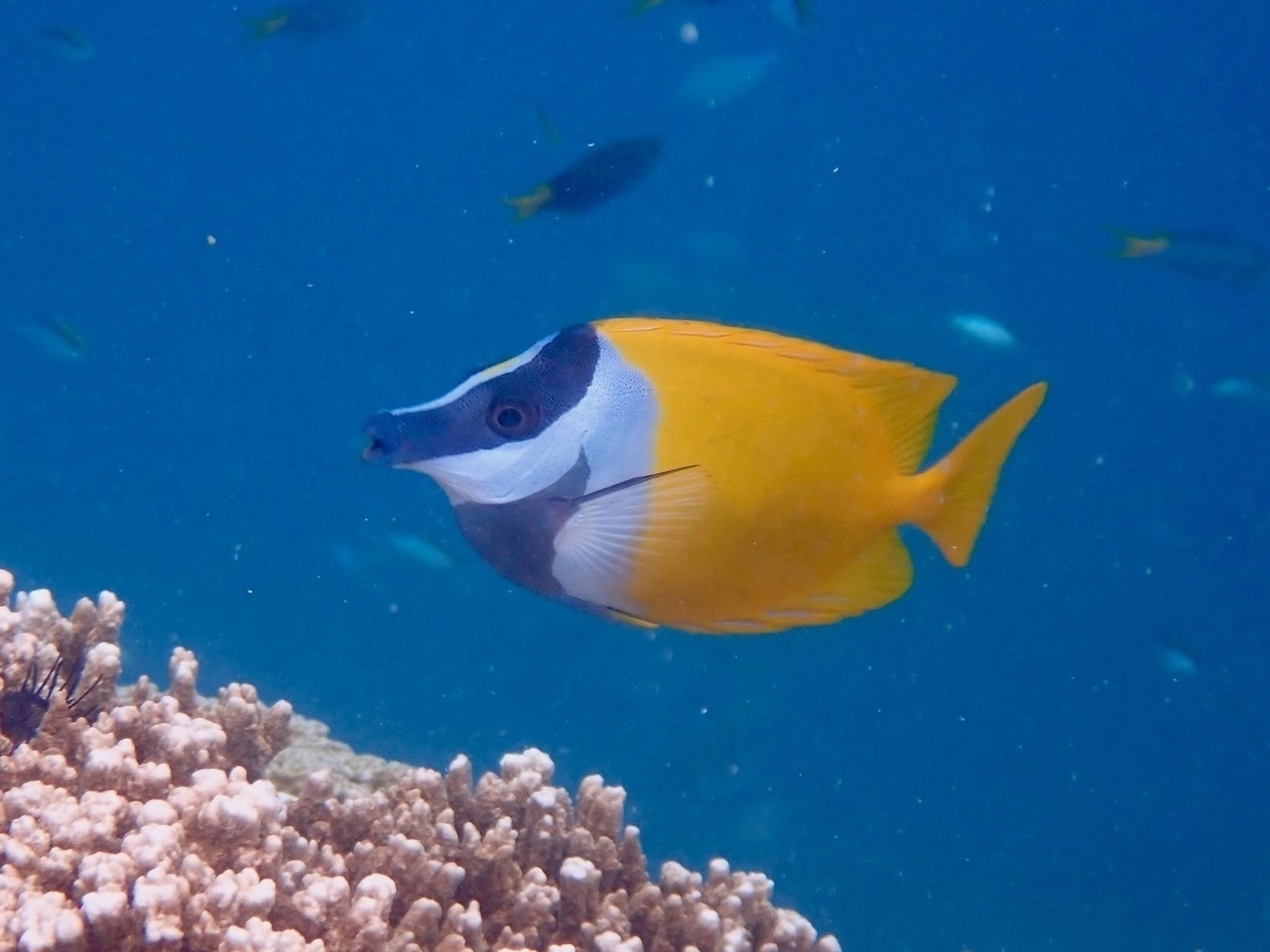


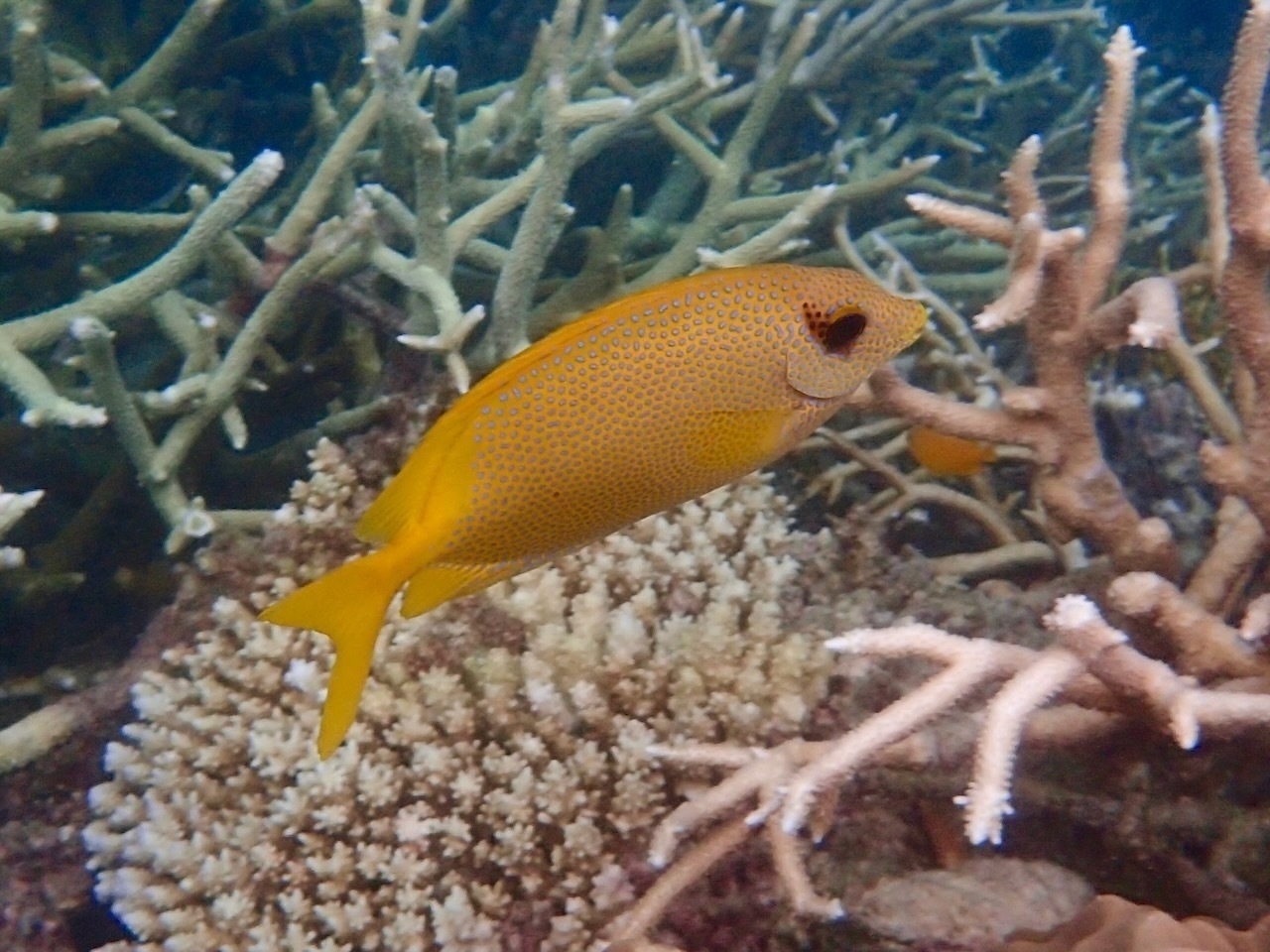




Visiting the Lone Pine Koala Sanctuary near Brisbane
We had a long layover in Brisbane, so we booked a tour that included a river cruise from the central city to the Lone Pine Koala Sanctuary—apparently, the first (since 1927!) and still leading sanctuary for these endangered animals.
The cruise featured prerecorded interpretative commentary, which was more interesting than we had expected. While you’re not passing important attractions on the ride, you do learn about the river and city. Most of the scenery, at least after you get out of the central city, are the backyard docks of residences—some historic, some elegant, but most nice but ordinary.
But you’re not here to learn about the river cruise—you’re here for the koala photos. So let’s just get right to it. -S🇦🇺
Look, I’m calling this guy Einstein, I don’t care what the sanctuary says his name is.

I get it, Mr Koala, that’s how I feel trying to get up some days, too.

I really like this quick snapshot of a young worker transporting a koala from one area to another, using a bribe of eucalyptus. She seems young and idealistic, dreaming of working here because she cares about koalas and wants to see the species survive. But her downward glance gives away her feelings now…even with its important mission, it’s also essentially just a zoo, one with captive wildlife, paraded for tourists to enjoy.
Anyway, I don’t think that’s actually how she feels. But that’s sorta the feeling we had during our visit. We were excited to see some koalas, at what we’re told is a premier koala sanctuary, but arrived to find a tourist-focused zoo—complete with additional tickets you can buy to feed the various animals.

A koala rests while the joey looks for some mischief.

A more complete view of “Einstein,” from the first close-up.

Koalas have interesting “hands,” which include three fingers and two opposing “thumbs,” designed to better grasp tree branches (the substantial claws help too).
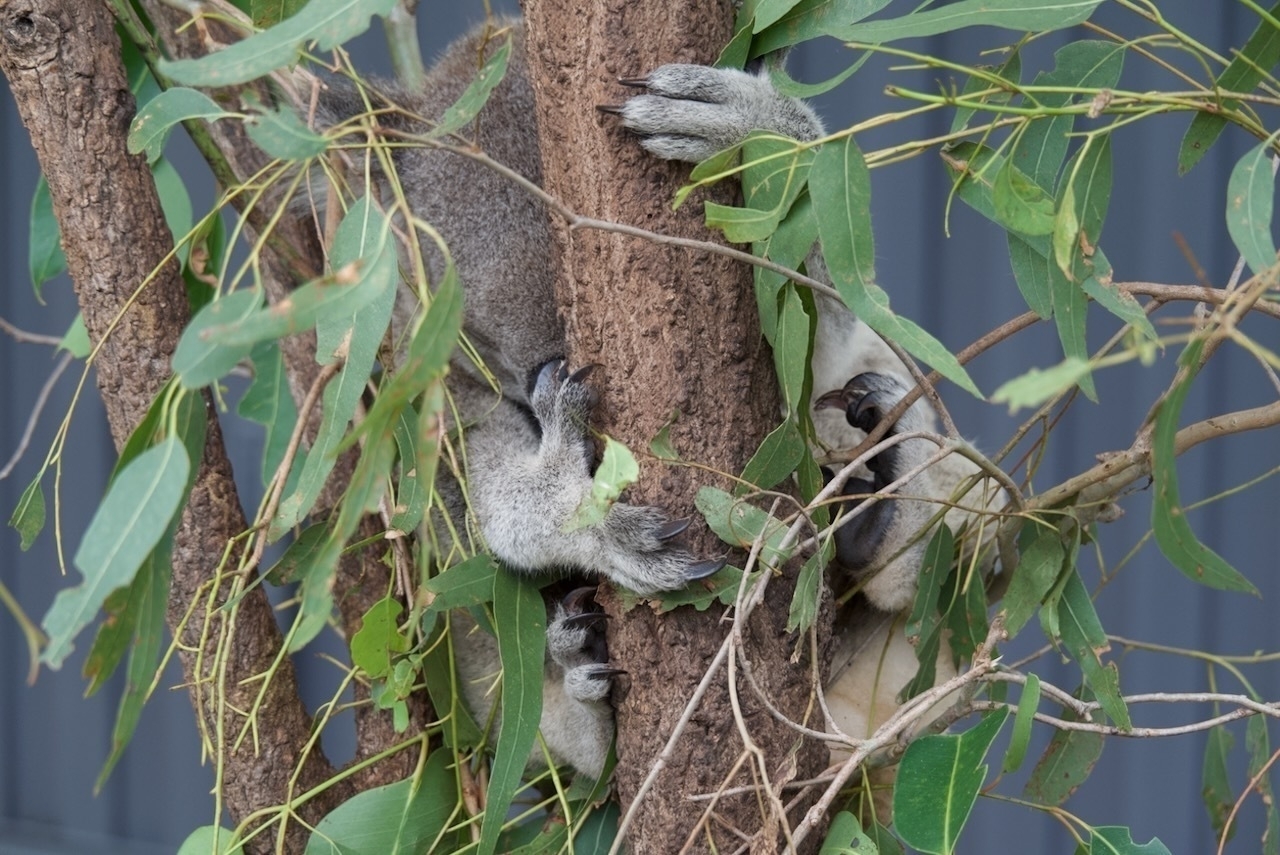
This odd beaked owl is not an owl at all, but something called a tawny frogmouth bird. It was uncaged and free roaming in the back “nocturnal” lot, so I’m not sure if it was part of the sanctuary or not.

The sanctuary had a number of other animals found in Australia (including the farm petting zoo variety), including a reptile and insect exhibit. This was one of my most favorite photos of the day.

I forgot the name of this lizard, but it was one of my favorites at the sanctuary.

These damn lizards were everywhere. In the more popular areas near the snack bar, you had to watch where you stepped to avoid them.

Joey hanging on tight as mom starts off for another branch.

It was fun watching this young one scramble around before eventually bailing for a snuggle with mom.

Uh oh…looks like someone has gotten into the stash of “medicinal plants…”

Yep, this one too. It’s sleepy time.

Oh dear, and this one, too.

This guy’s double toenail caught my eye when I saw him. Apparently koalas have a unique adaptation where their second and third toes are fused together and appear as a single digit, but each ends in two separate claws.
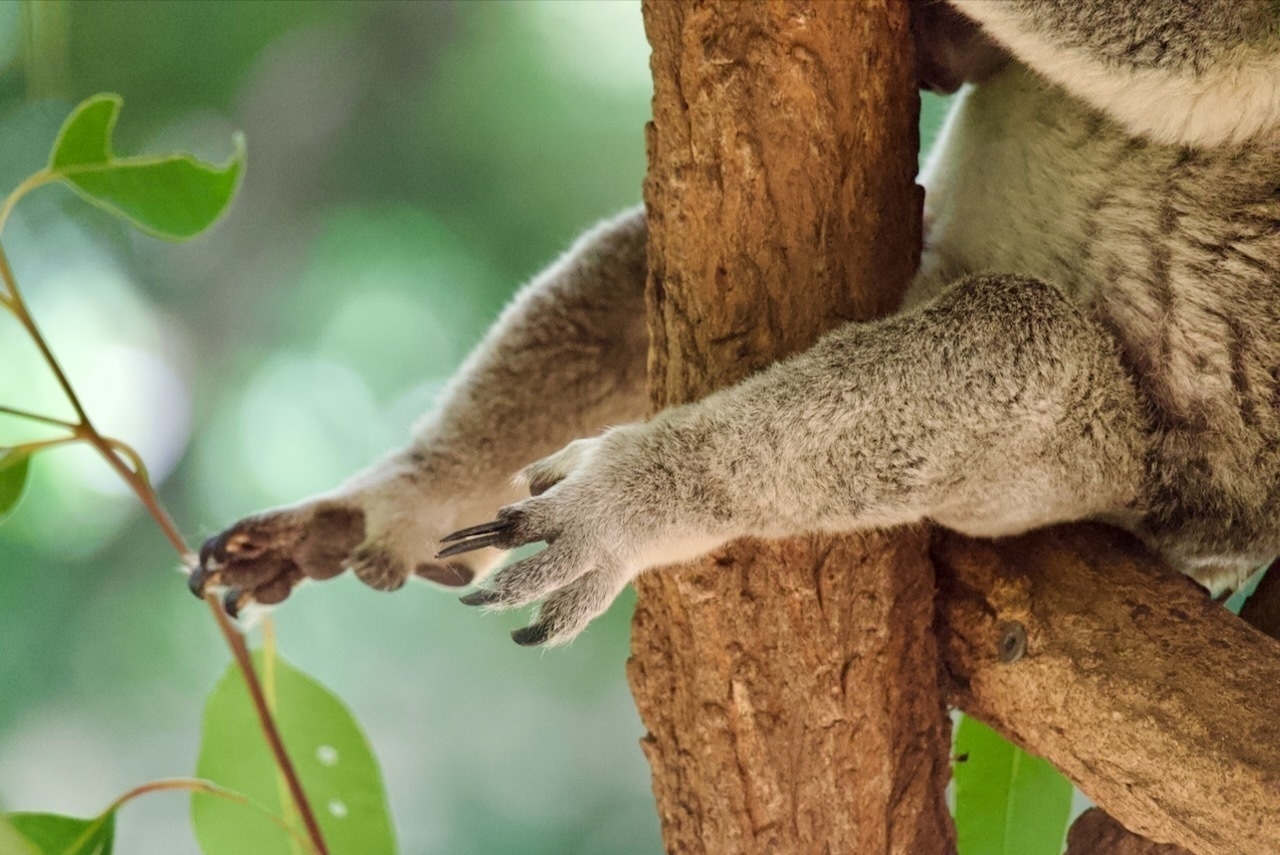
A Tasmanian devil.

This is a pademelon, and it’s a marsupial that’s related to kangaroos and wallabies, but is much smaller.

A wombat sleeping in a log. Did you know that wombat poop is a square cube? Apparently that’s so it doesn’t roll away, as they use it to mark their territory.

Supposedly, this is an authentic Australian dingo…but it sure looks like a regular ol’ dog to me. 🤷♂️

There were plenty more animal photos, but I think we’ll leave it there at 20.
Ancient City of Polonnaruwa - UNESCO World Heritage Site #3 on our Day Tour of North-Central Sri Lanka
The third and final UNESCO Heritage site we visited on our day trip to North-Central Sri Lanka was to the ancient city of Polonnaruwa, the second kingdom in, and capital of, Sri Lanka after the destruction of Anuradhapura in 993. Trade and agriculture were key here, leading to the building of an intricate irrigation system that still used today to supply the water necessary for the paddy cultivation in the eastern part of the country. This was probably our favorite part of the tour, especially since we love exploring ancient ruins. -J 🇱🇰There are many ruins scattered throughout the site. 


 Here is a ladder leaned up against a ruin wall to show the scale of some of these ruins.
Here is a ladder leaned up against a ruin wall to show the scale of some of these ruins. There are many statues scattered throughout the site, sometimes framed by things like doorways.
There are many statues scattered throughout the site, sometimes framed by things like doorways.
 These two jokers….
These two jokers….
 …were guarding the stairways to see this guy.
…were guarding the stairways to see this guy.
 Peek-a-Boo.
Peek-a-Boo. Nope, he was actually the centerpiece in this ruin.
Nope, he was actually the centerpiece in this ruin. The ruins have quite a bit of detail still visible.
The ruins have quite a bit of detail still visible.

 Didn’t I already tell you there was no more monkeying around?!
Didn’t I already tell you there was no more monkeying around?! There are many temples to see.
There are many temples to see. And Buddhas sitting, standing, and laying around.
And Buddhas sitting, standing, and laying around.


Sigiriya Ancient Rock Fortress - UNESCO World Heritage Site #2
The second UNESCO World Heritage Site we saw during our day trip from Colombo was the Sigiriya ancient rock fortress, dominated by the massive column of granite. In the 5th Century, King Kashyapa selected the rock and surrounding area for his new capital. On the top of the rock are archeological ruins, but we didn’t have time to climb up and explore. So we settled for a tuk tuk tour around the area checking out the surrounding ruins. -J 🇱🇰
Here is the Sigiriya rock:


No monkeying around - there are many ruins to see:

The Ruins:
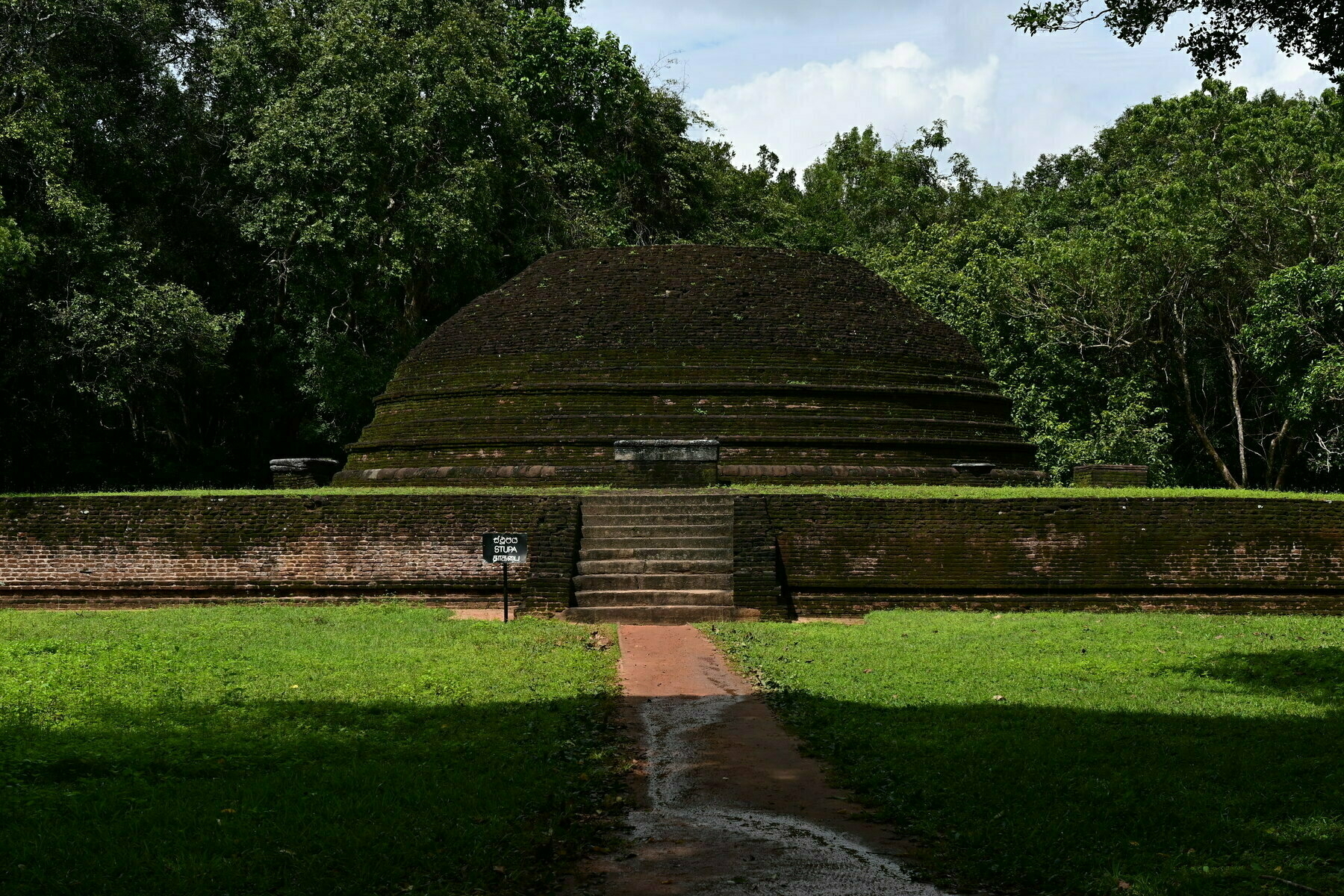

Cairns in a circle:

Many ruins have this bright green moss on them:


I said quit monkeying around:

Oh, the weird Buddha with the Cobra behind him will definitely scare the monkeys away:

During the tuk tuk ride, we noticed many of the roads contain these fences - it’s to keep the wild elephants from getting to close to homes and tourists (just like deer fences in the US):

Dambulla Cave Temple - Sri Lanka UNESCO World Heritage Site #1
While in Sri Lanka, we did a day tour from Colombo to three UNESCO World Heritage Sites, the first of which was Dambulla Cave Temple - the largest and best-preserved cave temple complex in Sri Lanka. The complex dates from the second and third centuries BC. The main site is spread over 5 caves and contains paintings and statues relating to Gautama Buddha, Sri Lankan kings, and gods and goddesses. -J 🇱🇰
Here is what the Temple looks like from the outside:

The cave ceilings are adorn with vivid paintings from centuries ago:

The caves themselves have many statutes of various numbers and sizes:

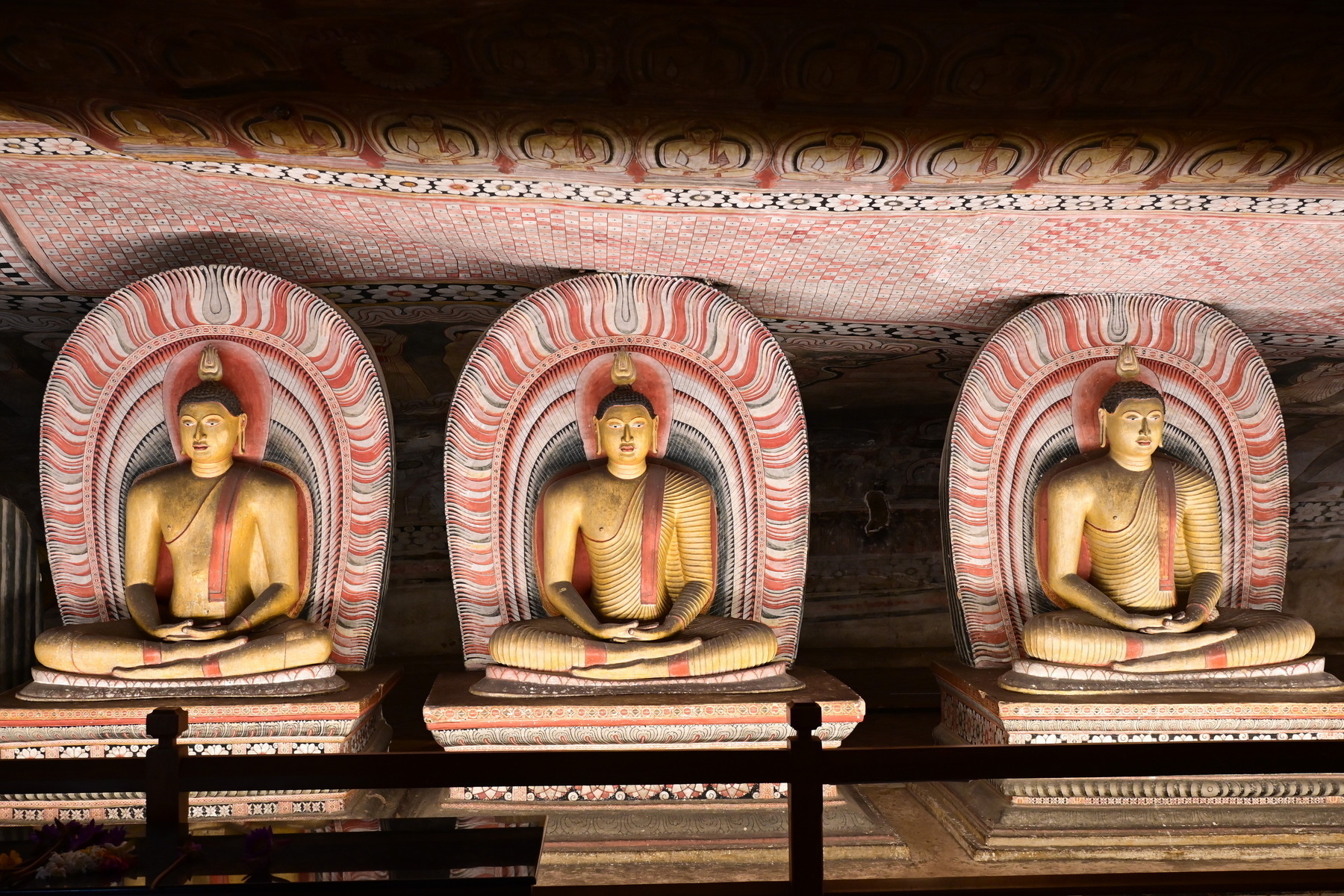


Reminder - Final Zoom Call of Our Adventure
Hey all - in case you missed the post here, we’re having our final Zoom call of our adventure on Friday night!
Friday, Jan. 31, 2025 at 6:00 pm Phoenix time (8:00 pm EST) (it will be 9 am on 2/1 for us!)
Bring your favorite weekend happy hour-ish beverages and jump on and say hi. We are missing everyone and would love to see your faces and hear your voices 😁
Tell us how you’re surviving these days!
Zoom call info
Here’s the link: https://zoom.us/j/93145557981
